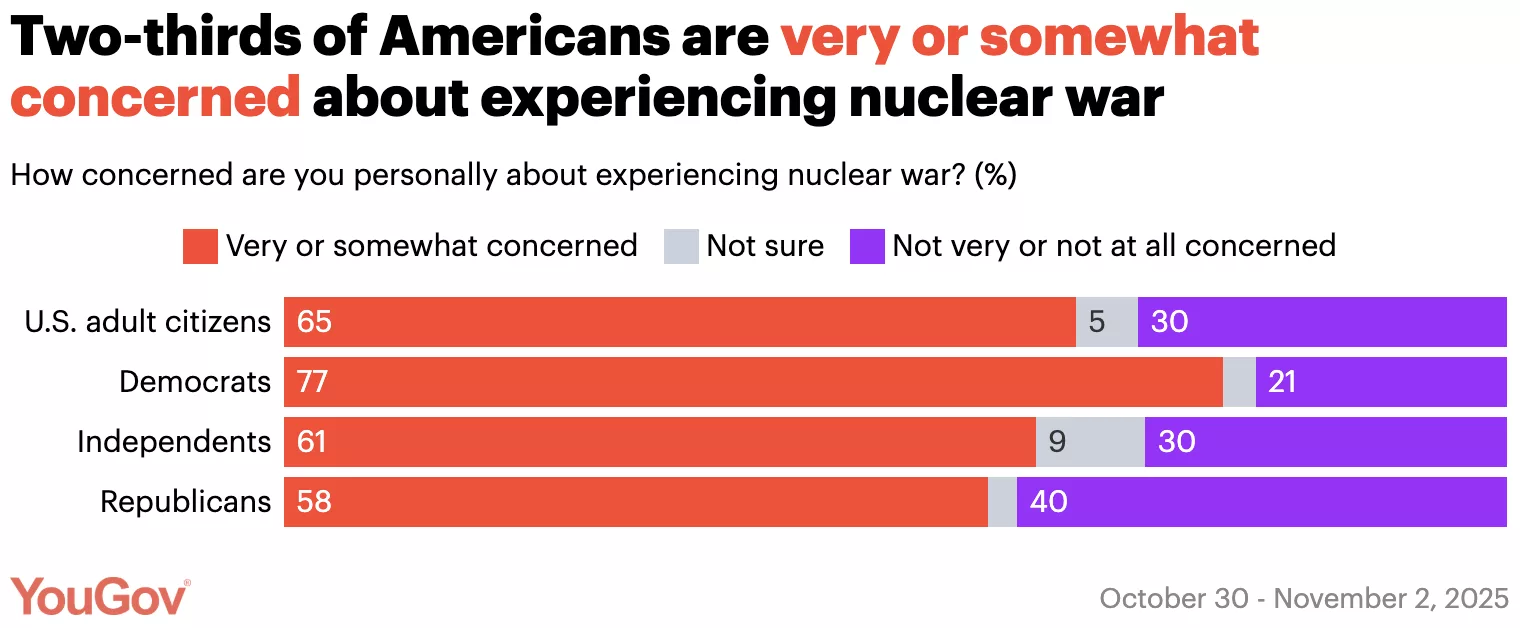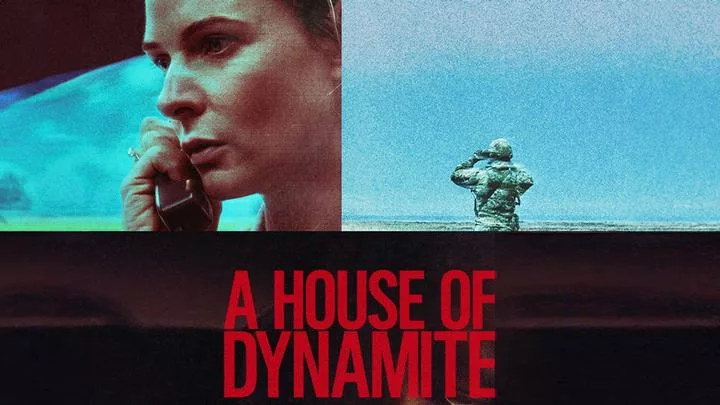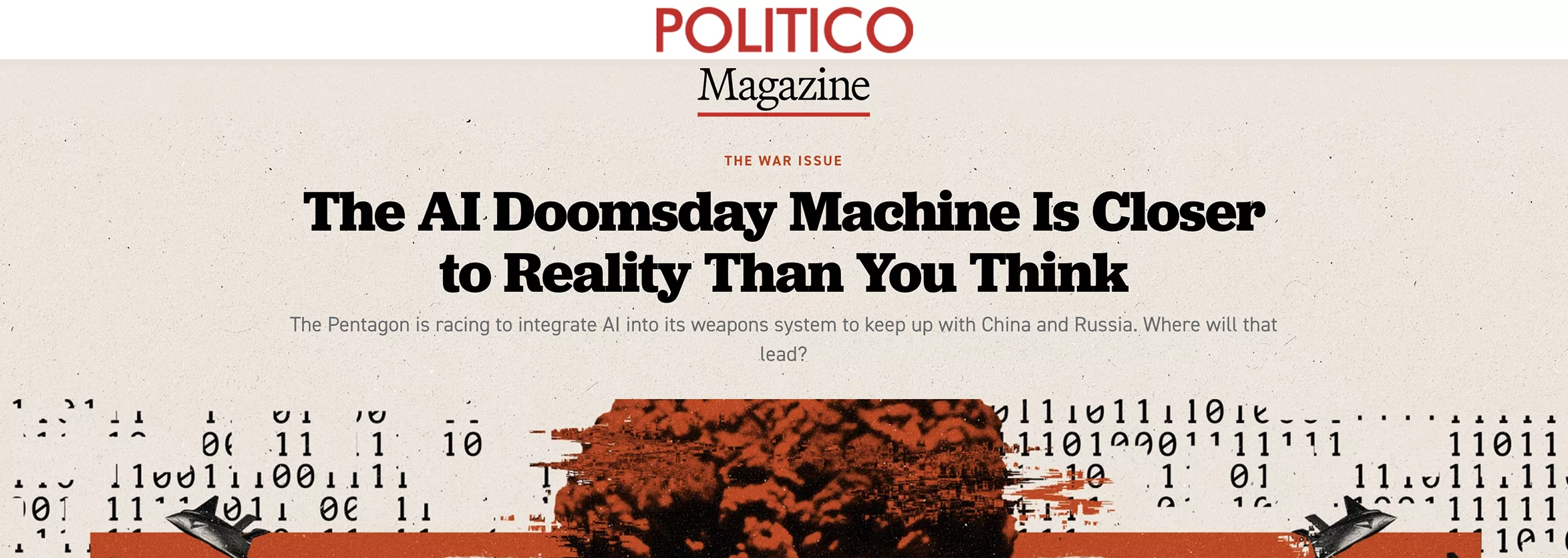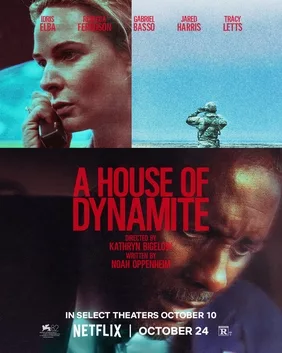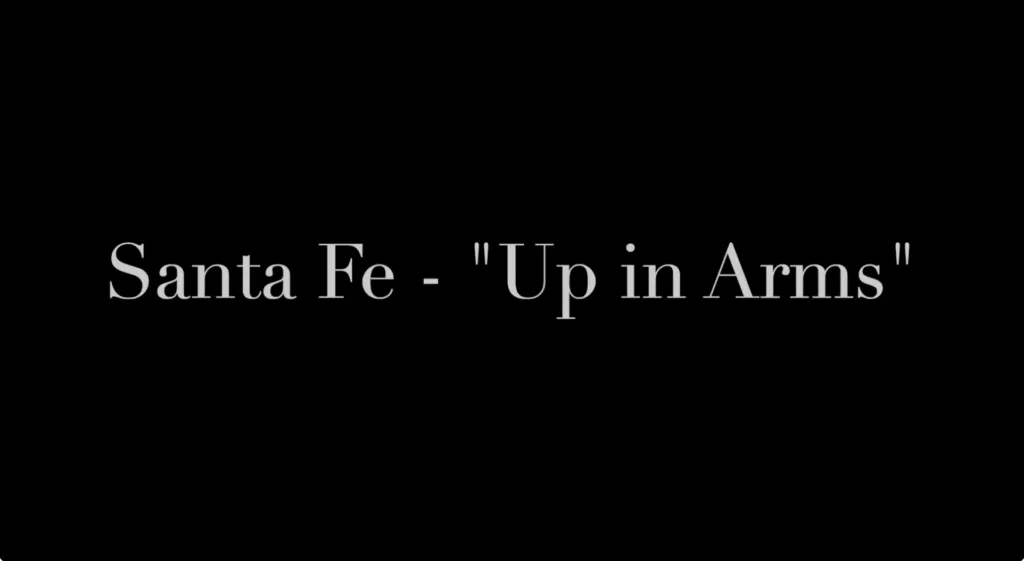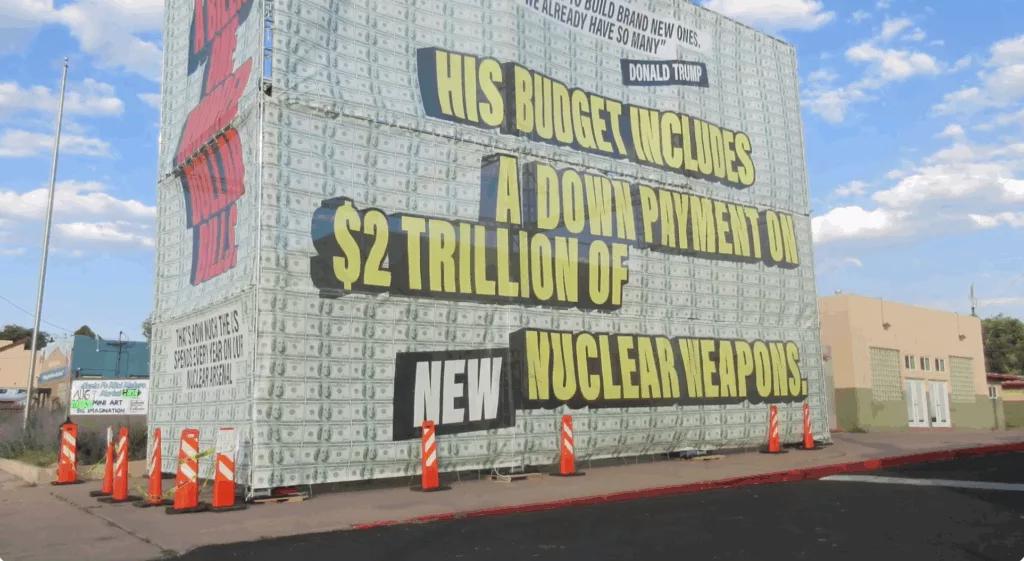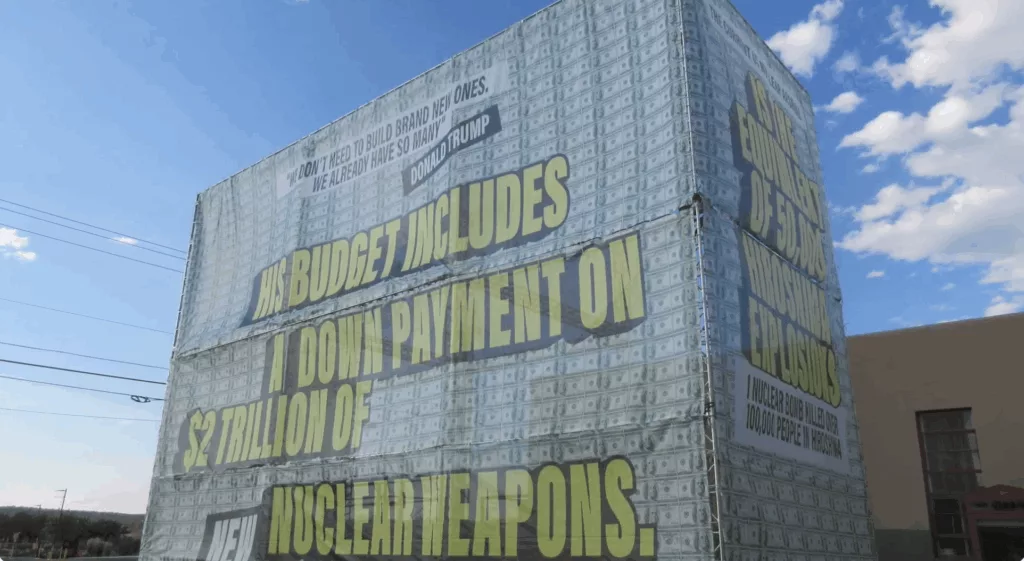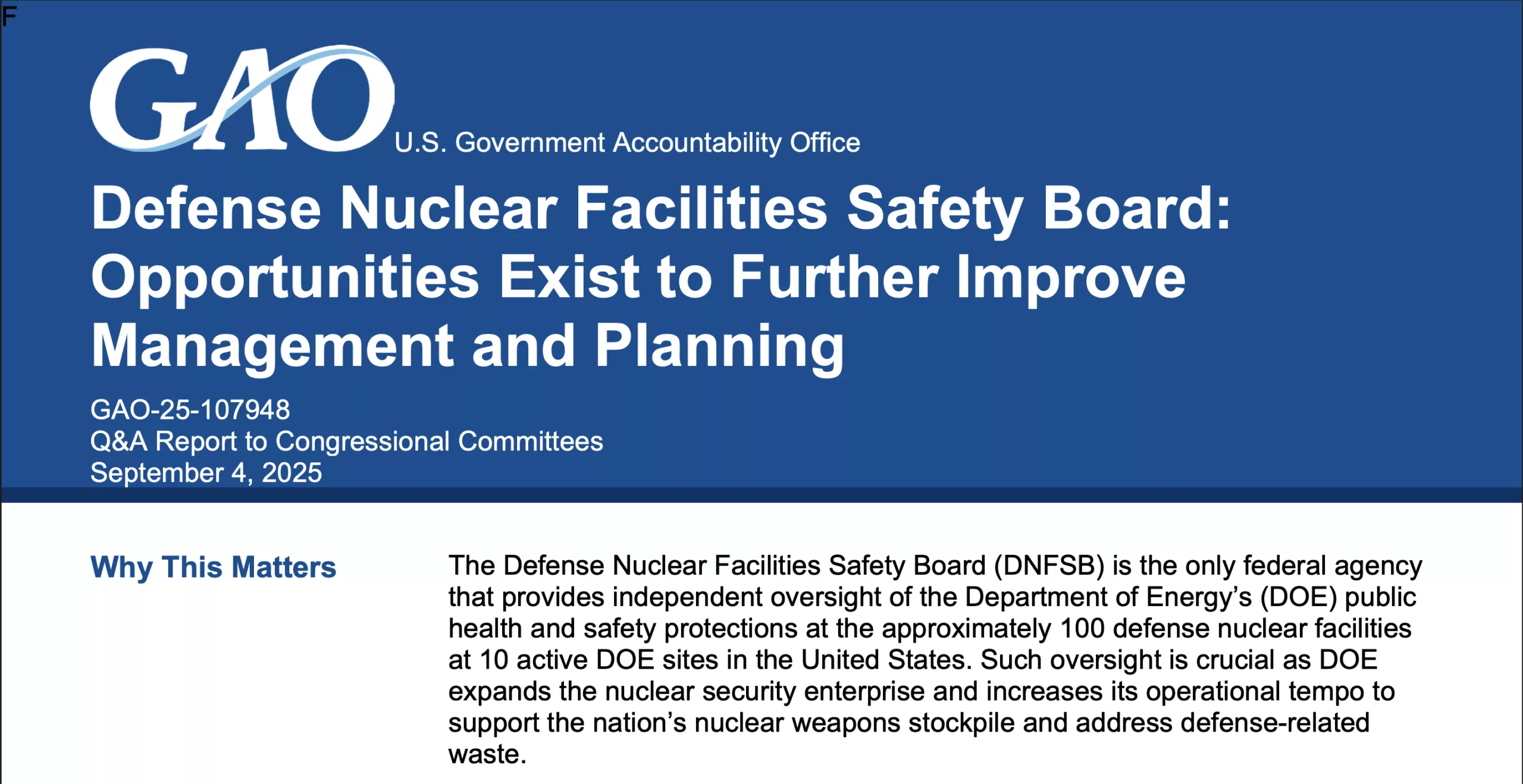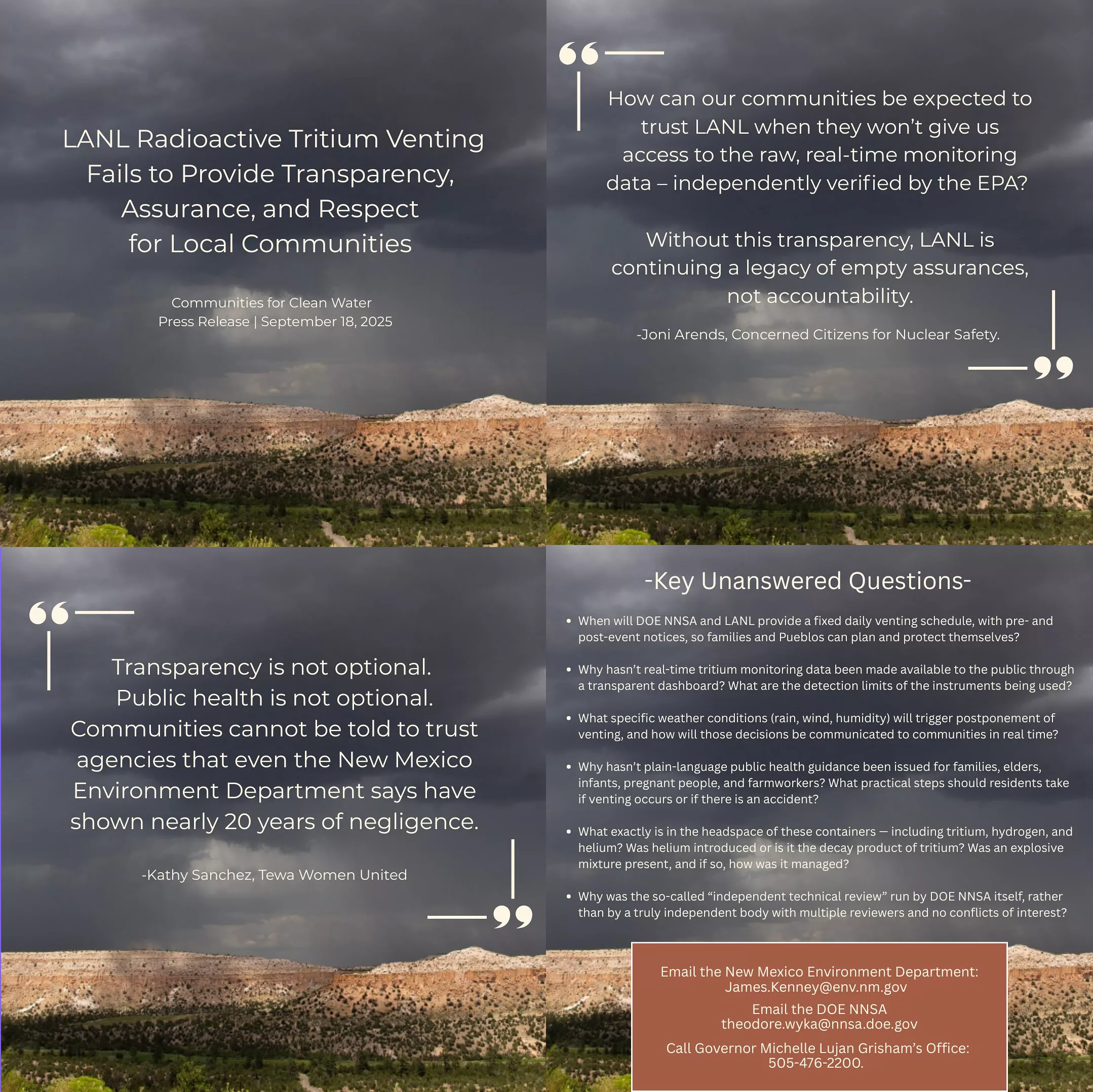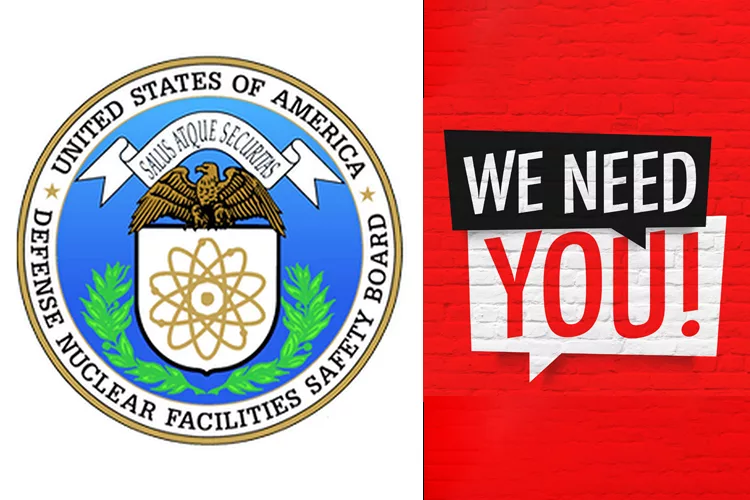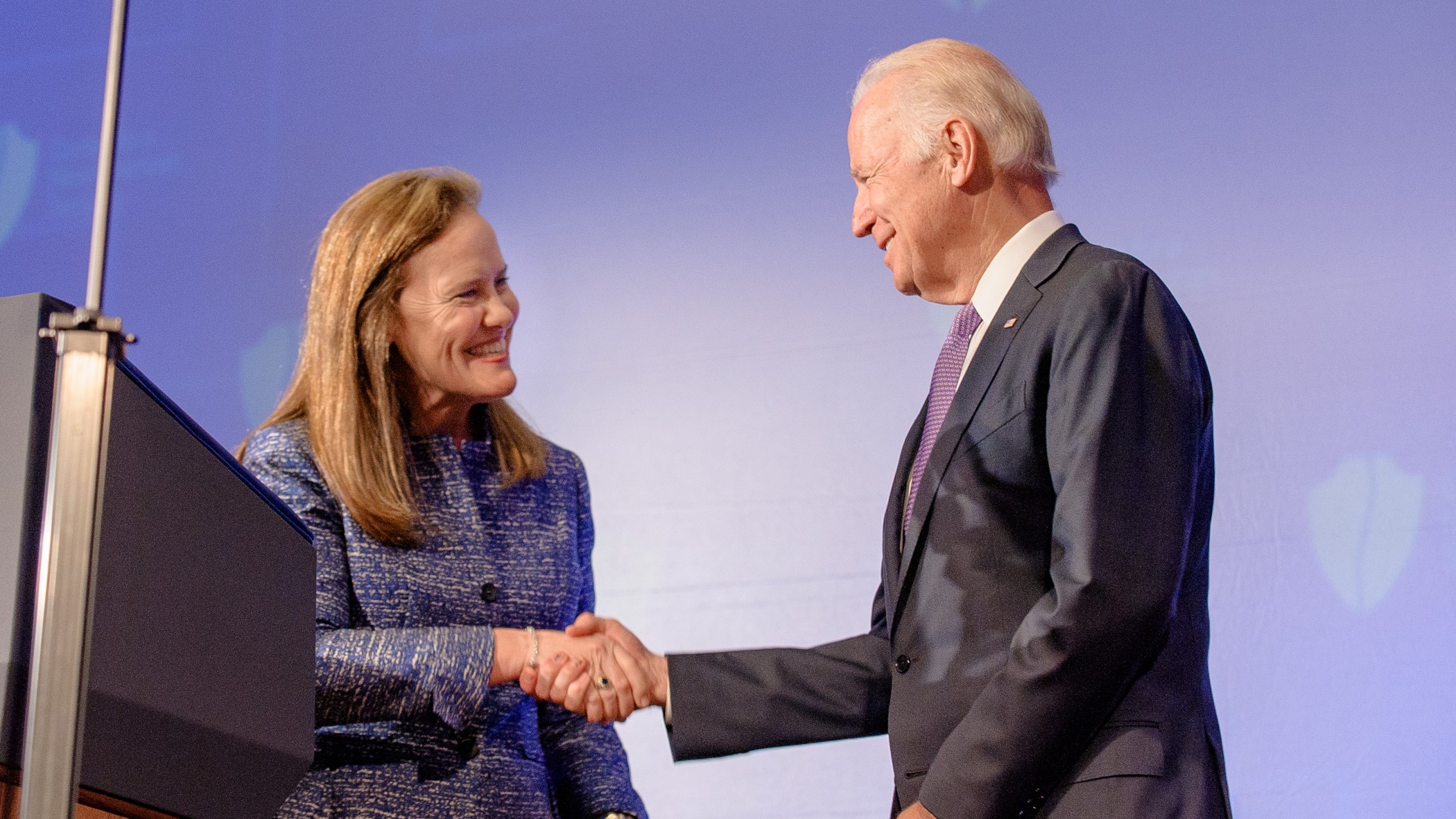What might Project 2025 mean for N.M.? Non-nuclear cuts at national labs (Updated Dec 1, 2025)
“[The Heritage Foundation’s Project 2025] contemplates pulling funding from any work unrelated to nuclear weapons at Los Alamos National Laboratory, Sandia National Laboratories and sister facility Lawrence Livermore National Laboratory in California…in New Mexico, some say cutting the labs’ other scientific work would have a devastating economic effect on the state and could ultimately weaken the institutions as a whole.”
“It doesn’t take a nuclear physicist to realize that there could be massive layoffs if this proposal or these ideas were to reach fruition,” said Chandler, who worked in the employment arena for much of her time at the facility. “Now, that might expand the nuclear weapons program to some degree, but it’s not going to absorb the entire workforce.”
“Under the Biden administration, LANL has seen a massive growth in employment as the laboratory ramps up for its production of plutonium pits, the cores of nuclear bombs.”
By Gabrielle Porter and Alaina Mencinger gporter@sfnewmexican.com amencinger@sfnewmexican.com | Updated santafenewmexican.com
Project 2025 — the now-infamous blueprint for a conservative presidency that’s still publicly being held at arm’s length by Republican presidential candidate Donald Trump — proposes all sorts of sweeping policy recommendations, from promoting capital punishment to embracing mass deportations.
But tucked in the 922 pages of its report, “Mandate for Leadership 2025: The Conservative Promise,” is one recommendation that centers squarely on New Mexico.
Trump talk on nuke testing turns focus to New Mexico’s role in decades of blasts
Jay Coghlan, executive director of the nuclear watchdog group Nuclear Watch New Mexico, said Wright’s comments “somewhat” quelled his initial concerns about a renewed explosive nuclear testing program.
But he said claims Russia and China may be conducting small-scale tests known as hydronuclear tests — banned by the Comprehensive Nuclear Test Ban Treaty, of which the United States, Russia and China are all signatories — continue to give him pause. He fears rumors about the low-yield tests in other nations could be used to justify a domestic return to testing.
“That, in effect, would give permission to the U.S. [to resume testing],” Coghlan said. “But that would be in violation of the norm of the CTBT.”
Three decades removed from the United States’ last nuclear test, a testing regimen would likely be expensive and time-consuming to start up, Coghlan argued, and could prompt other nuclear powers to follow suit.
It seems likely Russia, at least, would: Following Trump’s post, Russian President Vladimir Putin announced if the United States resumed explosive nuclear testing, the Eastern European nation would follow.
“Then everybody else is going to do it, or virtually everybody else will do it, every other nuclear weapons power,” Coghlan said. “I could just see India and Pakistan champing at the bit to test. And then, of course, there’s North Korea and China.”
By Alaina Mencinger amencinger@sfnewmexican.com | November 30, 2025 santafenewmexican.com
It might not have as reverent a name as the Trinity Test or a litany of films made about it. But Project Gnome, a 1961 explosive nuclear test conducted near Carlsbad, is a relic of a bygone era in New Mexico and beyond.
In the 47 years between the Trinity Test and the end of the United States’ explosive nuclear testing in 1992, the nation would perform more than 1,000 such tests — more than any other nuclear nation — with most conducted in Nevada.
New Mexico might not have been the center of the nation’s testing efforts post-Trinity, which marked its 80th anniversary this year, but the state still played a role: Researchers from Sandia National Laboratories and Los Alamos National Laboratory helped design and conduct testing elsewhere, including at the Nevada Test Site and in the Marshall Islands.
Most Democrats and one-third of Republicans think it’s likely the U.S. will get into a nuclear war in the next decade
A new YouGov poll on nuclear weapons finds that nearly half of Americans believe it’s likely the U.S. will get into a nuclear war in the coming decade, and most are worried about personally experiencing a nuclear war. A majority believe nuclear weapons are making the world less safe, but opinions are mixed on whether the U.S. should dismantle all of its nuclear weapons.
By: Jamie Ballard| November 26, 2025 today.yougov.com
46% of Americans think it’s likely the U.S. will get into a nuclear war within the next 10 years; 37% think this is not very or not at all likely. 57% of Democrats and 37% of Republicans think this is likely.
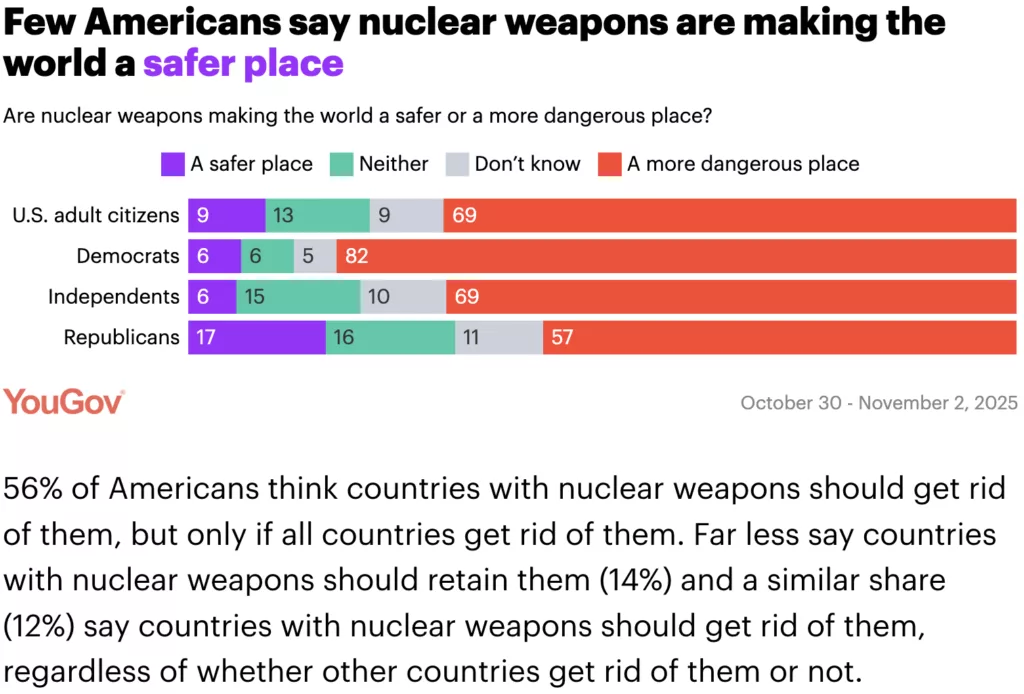
Department of Energy Seeks to Eliminate Radiation Protections Requiring Controls “As Low As Reasonably Achievable”
An internal Department of Energy (DOE) memorandum eliminates worker and public radiation protection rules known “As Low As Reasonably Achievable” (ALARA). This fundamental departure from decades of accepted health physics practices is being promoted by senior DOE political appointees with little background in health or radiation control. It is marked as “URGENCY: High” under the auspices of the DOE Deputy Secretary, the Under Secretary for Science, and the Administrator of the National Nuclear Security Administration. The memorandum awaits the final signature of DOE Secretary Chris Wright.
The memo’s stated goal is to:
“…remove the ALARA principle from all DOE directives and regulations, including DOE Order 458.1, Radiation Protection of the Public and the Environment, NE [Office of Nuclear Energy] Order 458.1, Radiation Protection of the Public, and, upon completion of the rulemaking process, 10 CFR [Code of Federal Regulations] 835, Occupational Radiation Protection.” [1]
It follows the playbook of the Heritage Foundation’s Project 2025, which called for:
“Set[ting] clear radiation exposure and protection standards by eliminating ALARA (“as low as reasonably achievable”) as a regulatory principle and setting clear standards according to radiological risk and dose rather than arbitrary objectives.” [2]
Lab Chromium Contamination Confirmed on San Ildefonso Pueblo Land
Comprehensive Cleanup Needed Instead of More Nuclear Weapons
The New Mexico Environment Department has announced:
“A toxic chromium plume from Los Alamos National Laboratory has spread beyond Lab boundaries onto Pueblo de San Ildefonso land for the first time, with contamination exceeding state groundwater standards… These new results are conclusive evidence that the U.S. Department of Energy’s efforts to contain the chromium plume have been inadequate.”
In reality, chromium groundwater contamination probably migrated beyond the LANL/San Ildefonso Pueblo boundary long ago, with past Lab maps of the plume “magically’ stopping at the border. In the past, tribal leadership has commented that it was fortunate that the contamination stopped there, but that any future indications of groundwater contamination on Pueblo land could have serious consequences. The San Ildefonso Pueblo is a sovereign Native American tribal government.
As late as the late 1990s the Lab was falsely claiming that groundwater contamination was impossible because underlying volcanic tuff is “impermeable.” [1] This ignored the obvious fact that the Parajito Plateau is heavily seismically fractured, providing ready pathways for contaminant migration to deep groundwater. By 2005 even LANL acknowledged that continuing increasing contamination of the regional aquifer is inevitable.[2] Some 300,000 northern New Mexicans rely upon the aquifer for safe drinking water. The potential serious human health effects (including cancer) caused by chromium contamination was the subject of the popular movie Erin Brockovich.
LANL chromium plume spreads onto San Ildefonso Pueblo land, NMED says
Nuclear Watch New Mexico executive direcor Jay Coghlan sees PF-4 as being a bigger scale — and having bigger risks — than the other aging buildings.
“PF-4 is not unique in being old,” Coghlan said. “However, PF-4 is totally unique in currently being the only facility that can process large amounts of plutonium … particularly including plutonium pit production. I think, in part, that’s why the Safety Board focuses more on PF-4 than, to my knowledge, than any other single individual facility.”
By:Patrick Lohmann | November 13, 2025 sourcenm.com
An underground plume of toxic chromium has spread from Los Alamos National Laboratory to Pueblo de San Ildefonso land, state Environment Department officials announced Thursday.
The discovery marks the first time the plume has been detected within the pueblo boundaries, officials said in a news release, though they added the plume’s spread does not pose imminent threats to drinking water in the pueblo or in Los Alamos County. That’s because the plume is not near any known private or public wells, officials said.
Long-term ingestion of hexavalant chromium can cause serious health problems or increase risk of certain cancers.
US Stands Alone Defying UN Vote on Nuclear Test Ban Treaty
Could the LDS Church end an ongoing nuclear weapons project? These veteran activists think so.
By Thalif Deen, Inter Press Sevice | November 12, 2025 ipsnews.net
UNITED NATIONS, Nov 12 2025 (IPS) – The US took another step backward –to break ranks with the United Nations– when it voted against a draft resolution calling for the entry into force of the Comprehensive Nuclear-Test-Ban Treaty (CTBT).
The negative vote followed an announcement by President Trump last month that the US plans to resume nuclear testing after a 33-year hiatus. The US stood alone on the UN vote, which was supported by almost all member States in the General Assembly’s First Committee.
The resolution was adopted by an overwhelming majority: with 168 votes in favor, with one against (United States) and 3 abstentions (India, Mauritius, Syria).
During Trump’s first term, the US abstained on the vote. And in other years they had been voting in favour.
Jackie Cabasso, Executive Director, Western States Legal Foundation, which monitors and analyzes U.S. nuclear weapons programs and policies, told IPS the chaos and uncertainty arose from Trump’s factually-challenged social media post that “because of other countries testing programs, I have instructed the Department of War to start testing our Nuclear Weapons on an equal basis.”
The U.S. government’s first ever “No” vote, on the annual UN resolution in support of the Comprehensive Test Ban Treaty (CTBT), raises further troubling questions about U.S. intentions.
Harking to the MX, Utahns call on LDS Church President Oaks to speak out against nuclear missile being developed in Utah
Could the LDS Church end an ongoing nuclear weapons project? These veteran activists think so.
THE SALT LAKE TRIBUNE | November 9, 2025 sltrib.com
Decades ago, peace activists helped keep a major nuclear weapons system out of Utah with help from key figures, chiefly Spencer W. Kimball, then the president of The Church of Jesus Christ of Latter-day Saints.
Now some of those same individuals are calling on the church’s newly ascended president, Dallin H. Oaks, to follow in his predecessor’s footsteps and speak out against the federal government’s development of a new generation of nuclear missile, known as Sentinel, partly in the Beehive State.
“The arms race continues,” the group of 12 Utahns and one former resident write in a letter mailed to church headquarters in early October, “and a new moral challenge faces” the leaders of the Utah-based faith.
Nuclear Weapons Issues & The Accelerating Arms Race: November 2025
Nuclear weapons:
The government shutdown has impact:
National Nuclear Security Agency confirms 152 furloughed at offices in Albuquerque, Los Alamos
Only 14 employees remain at the two sites By: Danielle Prokop-October 22, 2025
The NNSA confirmed 152 New Mexico employees charged with overseeing national laboratories’ nuclear weapons work were furloughed on Oct. 20, 2025. (Courtesy of NNSA)
The federal government this week sent home more than 150 federal New Mexico employees charged with overseeing national laboratories’ nuclear weapons work, with only 14 employees across two sites remaining at work, the National Nuclear Security Agency confirmed to Source NM.
The furloughs include 71 employees at NNSA’s Los Alamos field office and 81 at the Sandia National Laboratories location, NNSA Deputy Director of Communications Laynee Buckels told Source NM in an email. Seven employees remain at each site, working without pay, she said.
The field offices are responsible for “ensuring compliance with federal contracts to manage and operate the national security assets,” according to the NNSA website
To date there doesn’t appear to be furloughs at LANL, whose employees technically work for a contractor rather than the federal government. Congress is not furloughed, but Speaker Mike Johnson has kept the House out of session. As a result, legislation has come to a screeching halt.
Los Alamos’ plutonium facility safety systems need improvement, oversight board says
Nuclear Watch New Mexico executive direcor Jay Coghlan sees PF-4 as being a bigger scale — and having bigger risks — than the other aging buildings.
“PF-4 is not unique in being old,” Coghlan said. “However, PF-4 is totally unique in currently being the only facility that can process large amounts of plutonium … particularly including plutonium pit production. I think, in part, that’s why the Safety Board focuses more on PF-4 than, to my knowledge, than any other single individual facility.”
By Alaina Mencinger amencinger@sfnewmexican.com | November 7, 2025 santafenewmexican.com
An independent oversight agency wants to see improved safety systems at the facility at the heart of Los Alamos National Laboratory’s plutonium pit mission: PF-4.
The Defense Nuclear Facilities Safety Board reported what it believes to be gaps in a safety analysis drafted for PF-4 and delays in upgrades to safety systems in a letter last month to Energy Secretary Chris Wright.
“Maintaining momentum for these safety infrastructure projects is more important in light of the issues with the safety analysis,” the board wrote in the letter dated Oct. 10. It was signed by former acting chairman Thomas Summers.
LANL Prioritizes Plutonium “Pit” Bomb Core Production Over Safety
The independent Defense Nuclear Facilities Safety Board recently released its Review of the Los Alamos Plutonium Facility Documented Safety Analysis. It concluded that:
“While LANL facility personnel continue to make important upgrades to the Plutonium Facility’s safety systems, many of those projects have encountered delays due to inconsistent funding and other reasons. DOE and LANL should consider prioritizing safety-related infrastructure projects to ensure that the Plutonium Facility safety strategy adequately protects the public, as the facility takes on new and expansive national security missions.” (Page 24)
In early October 2024, the Department of Energy’s semi-autonomous National Nuclear Security Administration (NNSA) announced with great fanfare that the Los Alamos Lab had produced its first “diamond stamped” plutonium pit for the nuclear weapons stockpile. Tens of billions of taxpayers’ dollars have been sunk into LANL’s long delayed and over budget pit production program. Given no further announcements, it is not currently known whether or not the Lab is meeting its congressionally required production goals. Endemic nuclear safety problems have long been an intractable issue, at one point even forcing a three-year halt to plutonium operations at LANL’s Plutonium Facility-4 (“PF-4”).
In its recent Review, the Safety Board reported:
“The [2009] Plutonium Facility safety basis described very large potential [radioactive] dose consequences to the public following seismic events…. DOE committed to upgrade and seismically qualify the ventilation system, with a particular focus on a specific ventilation subsystem…”
“As the only facility in the DOE complex that can process large quantities of plutonium in many forms, [PF-4] represents a unique capability for the nation’s nuclear deterrent. The Board has long advocated for the use of safety-related active confinement systems in nuclear facilities for the purposes of confining radioactive materials…Passive confinement systems are not necessarily capable of containing hazardous materials with confidence because they allow a quantity of unfiltered air contaminated with radioactive material to be released from an operating nuclear facility following certain accident scenarios. Safety related active confinement ventilation systems will continue to function during an accident, thereby ensuring that radioactive material is captured by filters before it can be released into the environment… (Page 2, bolded emphases added)
AP: Trump appears to suggest the US will resume testing nuclear weapons for first time in 30 years
“For Trump, who has cast Russia as a “paper tiger” for failing to swiftly subdue Ukraine, the message is that Russia remains a global military competitor, especially on nuclear weapons, and that Moscow’s overtures on nuclear arms control should be acted on.”
By MICHELLE L. PRICE and CHRIS MEGERIAN | October 30, 2025 apnews.com
BUSAN, South Korea (AP) — President Donald Trump appeared to suggest the U.S. will resume testing nuclear weapons for the first time in three decades, saying it would be on an “equal basis” with Russia and China.
The Kremlin pointed out that a global ban on nuclear tests has remained in place, but warned that if any country resumes nuclear testing Russia would follow suit.
There was no indication the U.S. would start detonating warheads, but Trump offered few details about what seemed to be a significant shift in U.S. policy.
He made the announcement on social media minutes before he met with Chinese leader Xi Jinping on Thursday in South Korea. He offered little clarity when he spoke to reporters later aboard Air Force One as he flew back to Washington.
The U.S. military already regularly tests its missiles that are capable of delivering a nuclear warhead, but it has not detonated the weapons since 1992. The Comprehensive Nuclear Test Ban Treaty, which the U.S. signed but did not ratify, has been observed since its adoption by all countries possessing nuclear weapons, North Korea being the only exception.
REUTERS: Trump tells Pentagon to immediately resume testing US nuclear weapons
“Russia – which tested a new nuclear-powered cruise missile on October 21, held nuclear readiness drills on October 22 and tested a new nuclear-powered autonomous torpedo on October 28 – said it hoped Trump had been properly informed that Moscow had not tested a nuclear weapon itself.”
By Trevor Hunnicutt, Ismail Shakil and Kanishka Singh | October 30, 2025 reuters.com
VIEW THE RECORDING: Santa Fe Ecumenical Conversations Towards Nuclear Disarmament at Santa Maria de la Paz Catholic Community – Monday, October 27
Archbishop John C. Wester and NukeWatch New Mexico presented a special evening at Santa Maria de la Paz Catholic Community on Monday, October 27, from 6:00 to 8:00 p.m. MT. Following a presentation from NukeWatch executive director Jay Coghlan on U.S. nuclear weapons “modernization,” the Archbishop shared reflections from his pastoral letter, Living in the Light of Christ’s Peace, and speak about the importance of dialogue and hope in working toward nuclear disarmament.
View the recording at https://www.youtube.com/watch?v=9LFmQzMoJds&t=1s
Trump Orders Nuclear Weapons Testing for New Nuclear Arms Race
New Plutonium “Pit” Bomb Cores at Los Alamos Lab Could Make It Real
Just minutes before meeting with Chinese President Xi Jinping, Trump posted on his Truth Social media platform that “Because of other countries testing programs, I have instructed the Department of War to start testing our Nuclear Weapons on an equal basis. That process will begin immediately.” House Speaker Mike Johnson soon followed on CNN saying, “I think it is an obvious and logical thing to ensure that our weapons systems work.”
No other countries are currently testing nuclear weapons (the last was by North Korea in 2017). Further, any nuclear weapons tests by the U.S. would be performed by the Department of Energy (whose last test was in 1992), not the Department of War (until recently the Department of Defense). Trump was likely referring to Vladimir Putin’s recent claims of a new nuclear powered cruise missile and a tsunami-causing nuclear-armed torpedo that could threaten America’s coastal cities. In addition, China is dramatically expanding its own fleet of intercontinental ballistic missiles.
But central to all this is the U.S.’ own $2 trillion “modernization” program that will rebuild every nuclear warhead in the planned stockpile with new military capabilities and produce new-design nuclear weapons as well. This so-called modernization program will also build new nuclear weapons production facilities expected to be operational until ~2080, and buy new missiles, subs, and bombers from the usual rich defense contractors, all to keep nuclear weapons forever.
‘Nuclear weapons are blasphemous’: Archbishop Wester continues disarmament push with talk
This event was organized by the “Santa Fe Ecumenical Conversations Towards Nuclear Disarmament” group at the Santa Maria de la Paz parish near the Santa Fe Community College. They kindly invited NukeWatch to speak before Archbishop Wester for what turned out to be a wonderful event. The full recording can be viewed at https://www.youtube.com/@SMDLP/streams
By Cormac Dodd cdodd@sfnewmexican.com | October 28, 2025 santafenewmexican.com
Despite saying he has received a somewhat muted response from the local faithful, Santa Fe’s Catholic archbishop is still pushing nuclear disarmament as vital to humanity’s spiritual well-being and continued existence.
“I think nuclear weapons are blasphemous, because I think nuclear weapons are humanity’s attempt to build a Tower of Babel, an attempt to eat from the apple of the tree of the Garden of Eden, to become like God, to become gods,” Archbishop John C. Wester said in a roughly 30-minute address at Santa Maria de la Paz Catholic Church south of Santa Fe.
“In humility, we must avoid inventing anything that, in a matter of hours, can destroy what God has created,” the leader of the Archdiocese of Santa Fe continued. “The story of Adam and Eve is archetypal, I think: When human beings try to become as God, they lose the Garden of Eden and they must endure the cruel reality of paradise lost.”
The archbishop’s comments followed a journey he undertook to Japan on the 80th anniversary of the U.S. military’s decision to drop atomic bombs on Hiroshima and Nagasaki toward the end of World War II. He spoke in front of an audience of about 50 people — who gave Wester a standing ovation — at Monday’s event
In a Looming Nuclear Arms Race, Aging Los Alamos Faces a Major Test
The lab where Oppenheimer developed the atomic bomb is the linchpin in the United States’ effort to modernize its nuclear weapons. Yet the site has contended with contamination incidents, work disruptions and old infrastructure.
By Alicia Inez Guzmán | October 28, 2025 The New York Times nytimes.com
In a sprawling building atop a mesa in New Mexico, workers labor around the clock to fulfill a vital mission: producing America’s nuclear bomb cores.
The effort is uniquely challenging. Technicians at Los Alamos National Laboratory must handle hazardous plutonium to create the grapefruit-size cores, known as pits. They do so in a nearly 50-year-old building under renovation to address aging infrastructure and equipment breakdowns that have at times disrupted operations or spread radioactive contamination, The New York Times found.
Now, the laboratory is under increasing pressure to meet the federal government’s ambitions to upgrade the nation’s nuclear arsenal. The $1.7 trillion project includes everything from revitalizing missile silos burrowed deep in five states, to producing new warheads that contain the pits, to arming new land-based missiles, bomber jets and submarines.
But the overall modernization effort is years behind schedule, with costs ballooning by the billions, according to the Congressional Budget Office. In 2018, Congress charged Los Alamos with making an annual quota of 30 pits by 2026, but by last year it had produced just one approved for the nuclear stockpile. (Officials have not disclosed whether more have been made since then.)
*The featured image differs from the article photo due to usage rights.
Why Putin’s ‘invincible’ nuclear-powered missile is more likely to become a disastrous ‘flying Chernobyl’ for Russia
The US abandoned efforts to build nuclear-powered missile weapons during the 1950s arms race with the Soviet Union as a nuclear-powered missile would effectively be a huge radiation risk.
Jeffrey Lewis, a nuclear nonproliferation expert at Middlebury College, described it as a “tiny flying Chernobyl,” referencing the Soviet power plant that melted down and covered a 1,600-mile area with toxic radiation…While Lewis believes the Burevestnik is only capable of subsonic speed and easy to intercept, he warned that Russia’s ambition poses a return to the Cold War era.
“NATO aircraft could intercept it. The problem is that Burevestnik is yet another step in an arms race that offers no victory for either side,” he wrote on X.
By Ronny Reyes | October 28, 2025 nypost.com
Russian strongman Vladimir Putin’s latest threats that Moscow is preparing to deploy its new “invincible” nuclear-powered cruise missile has drawn a rebuke from President Trump and a reminder of America’s own nuclear might.
But experts say the Burevestnik missile could end up being more like a disastrous “flying Chernobyl” for Russia — and proves Putin is actually nervous about the possibility of the US giving Tomahawk cruise missiles to Ukraine.
George Barros, of the Washington-based Institute for the Study of War, described Putin’s ominous Sunday announcement as a form of fear mongering from a Kremlin afraid that the US could give Kyiv a much more conventional weapon — the tried and true Tomahawk.
Russia tested new nuclear-powered Burevestnik cruise missile
“For Trump, who has cast Russia as a “paper tiger” for failing to swiftly subdue Ukraine, the message is that Russia remains a global military competitor, especially on nuclear weapons, and that Moscow’s overtures on nuclear arms control should be acted on.”
By Guy Faulconbridge and Lidia Kelly Tim Balk | October 26, 2025 reuters.com
- Russia tests nuclear-capable Burevestnik missile
- Missile flew for 14,000 km, 15 hours
- Putin says it can pierce any missile defences
Trump Administration Providing Weapons Grade Plutonium to Sam Altman
“If there were adults in the room and I could trust the federal government to impose the right standards, it wouldn’t be such a great concern, but it just doesn’t seem feasible.”
By: Joe Wilkins | October 24, 2025 futurism.com
With the economy the way it is these days, it’s nice to have a little walking around money.
Donald Trump certainly thinks so. Since his return to the White House, the president has labeled 440 federal properties for possible sale, leased 13.1 million acres of public land for strip mining, and held a fire sale for satellites developed by NASA’s Jet Propulsion Lab.
In one of his wildest money moves to date, the Financial Times reports that Trump is now offering companies access to plutonium from America’s arsenal of cold war nuclear missiles.
On Tuesday, the US Department of Energy (DOE) launched an application for interested parties to apply for access to a maximum of 19 metric tonnes — a little under 42,000 pounds — of weapons-grade plutonium, which has long been a key resource undergirding the US nuclear arsenal.
One of the companies anticipated to receive shipments of the fissile isotope from the DOE is Oklo, a “nuclear startup” backed — and formerly chaired — by OpenAI CEO Sam Altman. Earlier in October, Oklo was one of four US companies chosen by the DOE to join a new pilot program meant to rush the testing and approval of experimental reactor designs.
As the FT reports, we won’t know for certain until December 31, when the DOE announces the companies selected to purchase the plutonium, but it’s likely Oklo will be among them. That’s stirring up plenty of anxiety throughout the scientific community, who say the relaxed approach to nuclear development is a major cause for alarm.
“If there were adults in the room and I could trust the federal government to impose the right standards, it wouldn’t be such a great concern, but it just doesn’t seem feasible,” Edwin Lyman, a physicist with the Union of Concerned Scientists told the FT.
U.S. Agency That Protects Nuclear Arsenal to Furlough Workers
Jay Coghlan, the executive director of Nuclear Watch New Mexico, a private group that monitors the agency, said it was unclear if the furloughs would have any immediate effect on nuclear safety. “As a baseline, the nuclear safety officers have always been understaffed. There is simply not enough federal oversight as is. And then you’re talking about furloughing more,” he added.
By Tim Balk | October 17, 2025 nytimes.com
![]() The National Nuclear Security Administration said 1,400 workers would be affected by Monday.
The National Nuclear Security Administration said 1,400 workers would be affected by Monday.
Nuclear weapons safety oversight in decline with Trump, Biden inaction
The lone independent federal agency responsible for ensuring safety at U.S. nuclear weapons sites — including Hanford in Washington state — will lose its ability to issue recommendations for safer work by January if the Trump administration doesn’t replenish its board, which this month dwindles to one member.
By Patrick Malone | October 15, 2025 seattletimes.com
The Defense Nuclear Facilities Safety Board ensures adequate public health and worker safety by scrutinizing hazardous work conducted by the U.S. Department of Energy and its contractors that produce and maintain the nuclear arsenal. If the Trump administration and Congress don’t move quickly to populate the board, it will be incapable of issuing formal safety recommendations to the Energy Department, according to a report last month from the Government Accountability Office, Congress’ investigative arm.
If the board is without a quorum of at least three members for a year, “the agency would essentially be able to offer only nonbinding advice to DOE,” according to the report.
“The whole idea of having the board in place is to provide the optics in addition to the substance,” Nathan Anderson, a Washington state-based director in the GAO’s natural resources division, told The Seattle Times.
The board does not have regulatory or enforcement authorities, but its advice carries significant weight and cannot be easily dismissed or disregarded, the GAO report states. The board’s recommendations to the U.S. secretary of energy are published for public comment, and the secretary must respond in writing. The board also reports each year to selected congressional committees on its recommendations to the Energy Department and any outstanding safety problems.
FULL ORIGINAL ARTICLE (SEATTLE TIMES)
YOU CAN HELP SAVE THE DNFSB TODAY:
Continue reading
New Article about “Participatory Democracy in Action” Describes WIPP Permit Negotiations
Thanks to our friends at Concerned Citizens for Nuclear Safety for this article:
In an essay for NYU’s Democracy Project, David F. Levi, a former federal judge and director emeritus of the Bolch Judicial Institute at Duke Law, reflected on the negotiations he facilitated in New Mexico about the renewal of the hazardous waste permit for the Waste Isolation Pilot Plant (WIPP), a deep geologic repository for plutonium-contaminated waste generated in the fabrication of nuclear weapons. Judge Levi’s essay is entitled “Participatory Democracy in Action.” He wrote:
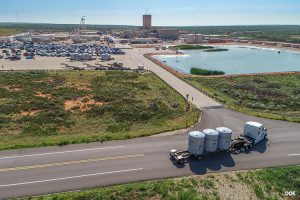 “A couple of years ago, I was asked to mediate a dispute between the U.S. Department of Energy (DOE) and the New Mexico Environment Department (NMED) concerning the renewal of a required state permit for DOE’s Waste Isolation Pilot Plant (WIPP), the nation’s only deep underground nuclear waste storage facility, located outside of Carlsbad, New Mexico. I thought I could help the two government entities but quickly came to realize that under the mediation procedures followed by New Mexico, the mediation would also involve citizen groups whose ultimate concurrence was essential to any complete resolution. This was entirely new to me.
“A couple of years ago, I was asked to mediate a dispute between the U.S. Department of Energy (DOE) and the New Mexico Environment Department (NMED) concerning the renewal of a required state permit for DOE’s Waste Isolation Pilot Plant (WIPP), the nation’s only deep underground nuclear waste storage facility, located outside of Carlsbad, New Mexico. I thought I could help the two government entities but quickly came to realize that under the mediation procedures followed by New Mexico, the mediation would also involve citizen groups whose ultimate concurrence was essential to any complete resolution. This was entirely new to me.
“In this case, there were seven such citizen groups entitled to participate and representing a variety of points of view. There was one group representing some of the government and business leaders of the town of Carlsbad who favored permit renewal on terms ensuring the continued long-term operation of WIPP. There were six groups expressing a variety of concerns about nuclear waste coming to New Mexico. They sought a more restrictive permit.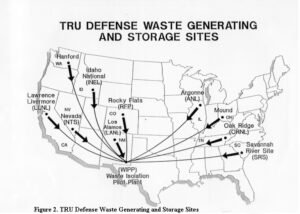
“To my astonishment, over the course of four full days, we worked through the multitude of issues and came to complete agreement. Something magical had happened. Thanks to the goodwill of the DOE and its contractor, the remarkable daily attendance and attentiveness of the NMED Secretary and the measured and well-informed way in which the various citizen groups made their points, we were able to find consensus and craft permit language that was acceptable to everyone.
“For me, as a former judge and mediator, the experience was thrilling. It was an experience of participatory democracy in action that made me proud of our fellow citizens and our government. Three aspects of the experience stand out. First, everyone in the room had taken responsibility for the way in which our nation’s only deep underground nuclear storage facility would be operated for the next 10 years. The citizen participants were not just making suggestions; they were assuming many of the attributes of decision makers. Second, all participants were advocating, compromising, and collaborating on behalf of what they saw as the public interest. These are the essential skills of democracy—the civic virtues so central to the Founders’ vision of what would make democracy work in America—and they require practice. Finally, over four days around a table, the citizens were able to take the measure of the DOE and NMED representatives. They came to realize, as I did, that these public servants, as well as the DOE contractor, were very well-informed, experienced, and intentioned. The government representatives had a similar experience of coming to appreciate the citizen questions and points of view. A government that relies on trust needs this kind of interaction to maintain that trust.
“It seems our democracy would be strengthened if we could extend the benefits of this kind of participatory structure to other areas of our legal and regulatory systems.”
“In Democracy in America, Alexis de Tocqueville made some of these points in reference to the jury trial in civil cases. He emphasized the importance of the civil jury trial as a free “public school” [https://contextus.org/Tocqueville,_Democracy_in_America_(1835),_Book_I,_Chapter_XVI_Causes_Mitigating_Tyranny_In_The_United_States_(Part_II).13?ven=Gutenberg&lang=en]  educating jurors in the democratic virtues and skills and teaching them to assume responsibility. In the same vein, every trial judge I know would attest to the importance of the jury experience for building confidence in the courts. After a trial, judges often hear words of gratitude from jurors who are deeply impressed by the legal process and are honored to have participated despite their initial dismay at being called to jury service. Sadly, the number of jury trials has diminished, particularly in federal court. Reversing that trend is a worthy goal, particularly for a branch of government that depends so heavily on public confidence.
educating jurors in the democratic virtues and skills and teaching them to assume responsibility. In the same vein, every trial judge I know would attest to the importance of the jury experience for building confidence in the courts. After a trial, judges often hear words of gratitude from jurors who are deeply impressed by the legal process and are honored to have participated despite their initial dismay at being called to jury service. Sadly, the number of jury trials has diminished, particularly in federal court. Reversing that trend is a worthy goal, particularly for a branch of government that depends so heavily on public confidence.
“As a final reflection: any persons involved as litigants will have an experience of the legal system. The experience can advance their sense of agency and participation, their ability to disagree civilly, and their trust in the courts. But how can these objectives be obtained when so many Americans cannot afford a lawyer? We can do so much better to provide understanding of and access to our justice system.”
The six New Mexico based non-governmental organizations were Citizens for Alternatives to Radioactive Dumping (CARD), Concerned Citizens for Nuclear Safety (CCNS), Conservation Voters New Mexico (CVNM), Nuclear Watch New Mexico, Southwest Alliance for a Safe Future (SAFE), and Southwest Research and Information Center (SRIC). The individual was Steve Zappe, a grandfather and former NMED WIPP Program Manager.
“A House of Dynamite” New Netflix Nuclear Catastrophe Film: Fiction, for Now
The reviews are rolling in for “A House of Dynamite,” which premiered in Europe earlier this month before coming to the U.S. on October 10th, with a full Netflix release scheduled for the 24th. Here’s the trailer, and see the schedule for Santa Fe theater showings here:
This Week! Santa Fe Theater Screenings for the Film “A House of Dynamite”
I attended one of these screenings last night, and I’ll let the professional critic reviews give the gist:
The Kathryn Bigelow thriller looks at what might happen if a ballistic missile were headed to the U.S. The director hopes the movie will start a conversation. New York Times: At Venice, ‘A House of Dynamite’ Is Scarier Than Most Horror Films
“The Netflix thriller captures from multiple perspectives the White House response to an unattributed missile launch headed for a major U.S. city in the harrowing 20 minutes until projected impact…”An unrelenting chokehold thriller so controlled, kinetic and unsettlingly immersive that you stagger out at the end of it wondering if the world will still be intact.” ‘A House of Dynamite’ Review: Idris Elba and Rebecca Ferguson in Kathryn Bigelow’s Precision-Tooled, Viscerally Unsettling Nail-Biter
“Told from the perspective of soldiers at a remote Alaskan missile base, staffers in the White House situation room, military officials at US Central Command (CENTCOM), and the president of the United States, the film weaves an overlapping timeline to show how the United States would respond to a missile attack…The film doesn’t want viewers to ask themselves how to thwart a nuclear attack on the United States. Rather, it wants the viewer to question the value of having nuclear weapons at all. ‘None of this makes sense,’ the President (Idris Elba) bemoans, ‘Making all these bombs and all these plans.'”
“A House of Dynamite is a terrifying examination of how terribly wrong things can go even with highly competent people in charge…But that’s also not necessarily the world we’re living in…The film shows why the worst can happen, even when competent, well-meaning people are trying to do the right thing.
But what if competence and decency are in short supply?” A House of Dynamite: Bigelow’s latest thriller shows why nuclear bombs are only part of the danger
This film left me reeling with tension and anxiety and exactly as the Times article titles it, is scarier than most horror films. Unlike ‘Oppenheimer,’ which largely glorified the invention of the atomic weapon, ‘A House of Dynamite’ makes it impossible to ignore the threat that nuclear weapons pose to our world. Working backwards from perspectives, and focused on how we can actually improve our odds of keeping this story a fictional one, here is what struck me most about this film:
-
-
Only one person decides what happens. But the real threat isn’t one reckless leader — it’s a reckless system. The final segment of the film features the “nuclear football” heavily, a briefcase containing launch procedures and options. In the United States, the president holds the sole and absolute authority to order the use of nuclear weapons. In the film, there are many voices in the President’s ear, but two primary perspectives quickly emerge after the defense fails and the ICBM remains inbound to its U.S. target: “One side advocates a retaliatory strike; the other, nothing. ‘It’s surrender or suicide,’ one adviser tells the President,” – thebulletin.org. The military aide carrying the nuclear football is tasked with providing the President the list of options if retaliation is chosen. An absolute must-read, Daniel Ellsberg’s book “The Doomsday Machine” breaks down many of the themes in the film with pure and terrifyingly honest account of Cold War-era nuclear strategy. In terms of launch authority, he describes how the inherent instability of the delegated command structure of the nuclear apparatus makes accidental or unwanted war an ever-present danger.
-
LANL tritium containers to head to Texas after last treatment
Four flanged tritium waste containers have been depressurized and transported to Los Alamos National Laboratory’s Weapons Engineering Tritium Facility, where they will be treated further before heading out-of-state for disposal.
By Alaina Mencinger amencinger@sfnewmexican.com | October 15, 2025 santafenewmexican.com
The containers’ final destination is Waste Control Specialists, a West Texas facility that handles the storage and disposal of radioactive waste.
The more than 1,300-acre facility in Andrews County is located on an approximately 14,000 acre property, which is sited on a thick clay formation which the company describes as “nearly impermeable.”
New documents have been added to the Los Alamos Legacy Cleanup Contract Electronic Public Reading Room.
All legacy cleanup documents required to be posted after April 30, 2018, are available on the site linked above.
For legacy cleanup documents that were posted prior to April 30, 2018, please visit the LANL electronic public reading room.
- Review, Notice of Completion of Off-Site Waste Shipments for Final Disposal, Activities 3.1.5, 3.1.8, and 3.3.4, Compliance Plan, Site Treatment Plan, Federal Facility Compliance Order Los Alamos National Laboratory [July 31, Aug. 21, 2025]
https://ext.em-la.doe.gov/GovFTPFiles/api/GetFiles/GetFile?fileName=EMID-703933_NMED_Review_STP_Shpmt_Jul_31_Aug_21_101525.pdf
Strong Political and Public Opposition Means Consolidated Interim Storage Facility (CISF) in NM “Impossible in the Near Future”
NEW UPDATE OCTOBER 10, 2025:
Holtec abandons plan to build New Mexico storage facility for spent nuclear fuel
This is excellent news. The Governor and state legislature (specifically Senator Jeff Steinborn and Representative McQueen) are to be commended for not allowing New Mexico to become the nation’s dumping ground for highly radioactive commercial spent fuel rods, especially when the Land of Enchantment has never had its own nuclear energy plant. Hard work from many New Mexicans made this happen.
So-called “interim” storage would never be interim when the federal government has failed for more than four decades to find a permanent repository for these lethal wastes. This also shows how hollow all the hype is about the claimed renaissance of nuclear power, when on the front end the industry can’t survive without taxpayer handouts, and on the back end can’t solve its radioactive waste problem.
Holtec’s quote that “New Mexico’s acquiescence is necessary” for interim storage to go forward is interesting, implying that we have to surrender as the nuclear colony that we are. Well, guess what, we didn’t surrender, and I predict you’ll see more of this. Moreover, whether you’re pro-nuclear or anti-nuclear, Holtec is an ethically questionable company, which is why the attorneys general of New Jersey and Massachusetts have sued it.
Adiós and good riddance, Holtec!
New York Times: Tax Break Scandal Leads to $5 Million Fine for N.J. Energy Company
SEE MORE:
Nuclear Weapons Issues & The Accelerating Arms Race: September 2025
Nuclear Weapons Update:
Putin has offered Trump a one-year extension of the numerical cap on strategic nuclear weapons in the new Strategic Arms Reduction Treaty which is 1,550 warheads (however, B52s are counted as one warhead while they can carry a dozen). New START expires in February 2026, which will be the first time the world will be without any nuclear arms control treaties since the mid-1970s. Trump has said it sounded like a good idea.
Note: New START ratification in 2010 provided the opportunity for Republicans in the Senate to attach the condition of $88 billion for nuclear weapons “modernization” that has since metastasized to ~$2 trillion. Nuclear disarmament must be prioritized as the ultimate goal over simply continued arms control.
A mere extension of the numerical cap would not involve Congressional ratification. The extension of New START’s numerical cap is in part to allow for a year in which to begin negotiations for a treaty replacement.
Plutonium Pit Production:
A draft plutonium pit production programmatic environmental impact statement is expected to be released next year in early 2026.
Accelerating Arms Race:
Is North Korea set to become world’s ‘fourth ICBM power’ after missile breakthrough? | Park Chan-kyong | South China Morning Post | September 11, 2025
A new era in North Korea’s missile programme may be dawning, as analysts warn of an imminent test launch of an intercontinental ballistic missile capable of carrying multiple warheads to the US mainland. Fresh from his appearance at China’s Victory Day parade in Beijing last week, North Korean leader Kim Jong-un personally oversaw the trial of a lighter, more robust solid-fuel ICBM engine, state media reported on Tuesday, touting the achievement as a “strategic” breakthrough.
Saudi Arabia signs a mutual defense pact with nuclear-armed Pakistan after Israel’s attack on Qatar | MUNIR AHMED & JON GAMBRELL | AP NEWS | September 18, 2025
DUBAI, United Arab Emirates (AP) — Pakistan’s defense minister says his nation’s nuclear program “will be made available” to Saudi Arabia if needed under the countries’ new defense pact, marking the first specific acknowledgment that Islamabad had put the kingdom under its nuclear umbrella.
Defense Minister Khawaja Mohammad Asif’s comments underline the importance of the pact struck this week between Pakistan and Saudi Arabia, which have had military ties for decades.
The move is seen by analysts as a signal to Israel, long believed to be the Middle East’s only nuclear-armed nation. It comes after Israel’s attack targeting Hamas leaders in Qatar last week killed six people and sparked new concerns among Gulf Arab nations about their safety as the Israel-Hamas war devastated the Gaza Strip and set the region on edge.
Russia suspected of helping North Korea build nuclear submarines, Seoul investigating | Park Chan-kyong | South China Morning Post | September 18, 2025
South Korea is investigating reports that Russia has supplied North Korea with nuclear submarine reactor modules, a move analysts see as highly plausible and one that could mark a breakthrough in Pyongyang’s decades-long push for a nuclear-powered navy… At the 8th Party Congress in January 2021, North Korea declared five core defence goals, including the development of nuclear-powered submarines and submarine-launched strategic nuclear weapons.
China Hardens Military Stance Against U.S. With Nuclear Weapons and Tough Talk | Brian Spegele | The Wall Street Journal| September 18, 2025
China played down its rapidly rising military might for years. In the past few weeks, Beijing has broadcast a steady drumbeat of firepower displays and muscular rhetoric, carrying an unmistakable warning for the U.S… Part of China’s confidence stems from the rapid growth of its firepower. The Pentagon estimates that China’s stockpile of nuclear warheads has more than doubled since 2020, alongside a growing array of options to launch those weapons, from mobile ground-launch systems to increasingly stealthy submarines.
Holtec Pulls Out of New Mexico Spent Nuclear Fuel Interim Storage Project
Holtec International has confirmed it is canceling plans to build a consolidated interim storage facility for spent nuclear fuel in southeastern New Mexico.
By Radwaste Solutions | October 9, 2025 ans.org
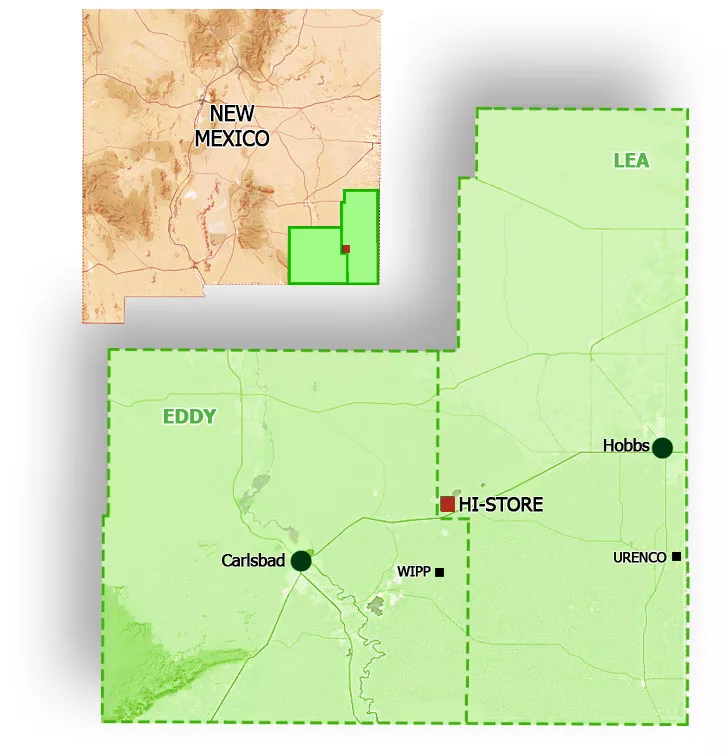
Named the HI-STORE CISF, the facility would have stored up to 10,000 canisters of commercial SNF on land owned by the Eddy-Lea Energy Alliance (ELEA) near the towns of Carlsbad and Hobbs.
“After discussions with our longtime partner in the HI-STORE project, the Eddy-Lea Energy Alliance, and due to the untenable path forward for used fuel storage in New Mexico, we mutually agreed upon canceling the agreement. This allows for ELEA to work to redevelop the property in a manner that fits their needs and allows Holtec to work with other states who are amenable to used fuel storage based on the recent DOE work on public education and outreach,” Holtec said in a statement (emphasis added).
Following the U.S. Supreme Court’s June ruling in NRC v. Texas, which found that petitioners did not have standing to challenge the Nuclear Regulatory Commission’s licensing of Interim Storage Partners’ CISF in Texas, Holtec said it expected to have its HI-STORE CISF license reinstated, allowing the company to move forward with the project. Holtec and ISP’s NRC licenses were vacated by the 5th Circuit Court of Appeals in a 2023 ruling.
Despite the court’s decision, New Mexico Gov. Michelle Lujan Grisham said she remained committed to preventing the HI-STORE CISF from being built. In 2023, New Mexico passed a bill barring the storage and disposal of high-level radioactive waste in New Mexico without the state’s explicit consent.
The AI Doomsday Machine Is Closer to Reality Than You Think
“Most troubling to experts on AI and nuclear weapons is that it’s getting harder and harder to keep decisions about targeting and escalation for nuclear weapons separate from decisions about conventional weapons.”
“There is no standing guidance, as far as we can tell, inside the Pentagon on whether and how AI should or should not be integrated into nuclear command and control and communications,” says Jon Wolfsthal, director of global risk at the Federation of American Scientists.
By Michael Hirsh | September 2, 2025 politico.com
Jacquelyn Schneider saw a disturbing pattern, and she didn’t know what to make of it.
Last year Schneider, director of the Hoover Wargaming and Crisis Simulation Initiative at Stanford University, began experimenting with war games that gave the latest generation of artificial intelligence the role of strategic decision-makers. In the games, five off-the-shelf large language models or LLMs — OpenAI’s GPT-3.5, GPT-4, and GPT-4-Base; Anthropic’s Claude 2; and Meta’s Llama-2 Chat — were confronted with fictional crisis situations that resembled Russia’s invasion of Ukraine or China’s threat to Taiwan.
Director Kathryn Bigelow is Sounding the Nuclear Alarm – Washington Post New Review
“A House of Dynamite” asks: How would the White House respond in the face of a nuclear attack?
By Max Boot | October 2, 2025 washingtonpost.com
VIEW MORE: “A House Of Dynamite” Q&A w/ Director Kathryn Bigelow, Tracy Letts, Jared Harris, And More At New York Film Fest —
80th Commemorations of Ban the Bomb – Trinity, Hiroshima & Nagasaki Remembrances in New Mexico
Exchange Monitor: DNFSB makes agency fixes, but needs members, GAO finds
The Defense Nuclear Facilities Safety Board (DNFSB) has tackled all but a few third-party recommendations to improve its culture over the past decade but suffers from a depleted board, according to a new report.
By ExchangeMonitor | September 5, 2025 santafenewmexican.com
Progress is tough with the five-person board probably…
China Hardens Military Stance Against U.S. With Nuclear Weapons and Tough Talk
Xi positions Beijing as powerful center of new global order as security forum convenes in capital
By Brian Spegele | September 18, 2025 wsj.com
BEIJING—China played down its rapidly rising military might for years. In the past few weeks, Beijing has broadcast a steady drumbeat of firepower displays and muscular rhetoric, carrying an unmistakable warning for the U.S….
Saudi Arabia signs a mutual defense pact with nuclear-armed Pakistan after Israel’s attack on Qatar
While not specifically discussing the bomb, the agreement states “any aggression against either country shall be considered an aggression against both,” according to statements issued by both Pakistan’s Foreign Affairs Ministry and the state-run Saudi Press Agency.
By MUNIR AHMED and JON GAMBRELL | September 18, 2025 apnews.com
ISLAMABAD (AP) — Saudi Arabia and nuclear-armed Pakistan have signed a mutual defense pact that defines any attack on either nation as an attack on both — a key accord in the wake of Israel’s strike on Qatar last week.
The kingdom has long had close economic, religious and security ties to Pakistan, including reportedly providing funding for Islamabad’s nuclear weapons program as it developed. Analysts — and Pakistani diplomats in at least one case — have suggested over the years that Saudi Arabia could be included under Islamabad’s nuclear umbrella, particularly as tensions have risen over Iran’s atomic program.
COMMUNITIES FOR CLEAN WATER: LANL Radioactive Tritium Venting Fails to Provide Transparency, Assurance, and Respect for Local Communities
FOR IMMEDIATE RELEASE: September 18, 2025
Santa Fe, NM — As NNSA and LANL continue operations to depressurize Flanged Tritium Waste Containers, Communities for Clean Water (CCW) calls out federal agencies for issuing vague assurances instead of transparent, verifiable data — and for dismissing community concerns with contradictory and incomplete statements that disregard what independent experts have found, the Department of Energy’s (DOE) own legal obligations, and the New Mexico Environment Department’s (NMED) acknowledgment that LANL has a long record of compliance failures.
“How can our communities be expected to trust LANL when they won’t give us access to the raw, real-time monitoring data – independently verified by the EPA,” asks Joni Arends with Concerned Citizens for Nuclear Safety. “Without this transparency, LANL is continuing a legacy of empty assurances, not accountability.”
Key Concerns:
-
Lack of real-time transparency – Since Friday (Sept. 12), the public has been forced to rely on NMED’s Facebook page for piecemeal updates. While LANL’s website provides very brief daily summaries, no near-real-time monitoring dashboard from DOE, NNSA, or LANL has been made available.
-
Vague assurances, not real information – NNSA’s updates claim “no tritium was released” while simultaneously telling the public to expect “very low levels of tritium” for subsequent venting. Without numbers, monitoring data, or detection thresholds, these phrases do not provide reassurance.
-
Weather risks – LANL has not disclosed thresholds for wind, rain, or humidity that would postpone venting. Communities watch weather shifts in real time but are left in the dark about how safety decisions are being made.
-
Dismissal of public health concerns – When asked for plain-language guidance that NMED stated LANL would provide, LANL responded only with “no offsite impact anticipated.” This is not meaningful and reassuring guidance, it’s a blanket dismissal that disregards independent expert findings and fails to meet DOE’s obligations to protect vulnerable populations.
-
Ignoring daily lifeways – Avoiding Pueblo Feast Days is not enough. This is harvest season, when outdoor cultural events, youth programs, and farming are in full swing. LANL’s scheduling continues to disregard these realities.
Unanswered Questions
Independent experts and community advocates have raised critical unanswered questions:
-
Unclear “depressurization” – LANL said “no internal pressure was found” in a container, but also claimed it was “depressurized.” If no pressure existed, what was released?
-
Unanswered helium questions – NMED stated helium was released, but LANL has not explained its origin. Was it introduced at sealing of the outer container, or a decay product of tritium?
-
Monitoring limits undisclosed – LANL has not disclosed the detection limits of its monitoring equipment. Readings “indistinguishable from zero” could still mask releases.
DOE NNSA Gives Misleading Statements on Native America Calling
On a recent Native America Calling program, DOE NNSA’s Los Alamos Field Office Deputy Director Pat Moss compared LANL venting to global natural tritium stocks. Independent expert Dr. Arjun Makhijani pointed out this comparison as misleading: “The problem is not global background, but local contamination. If venting occurs in rain and calm winds, local rainfall could exceed U.S. drinking water standards by hundreds to thousands of times.”
In their most recent public meeting, LANL admitted that infants could receive three times the radiation dose as adults. During the interview, Dr. Makhijani pressed this point – if adults are modeled at 6 mrem, that means infants could be at 18 mrem, nearly double the EPA’s 10 mrem compliance limit. Instead of addressing this directly, Mr. Moss provided a stock line, “We will be compliant with the regulatorily imposed release threshold and will be doing the calculations per the regulation.”
That is exactly the problem – hiding behind regulatory caps while ignoring clear evidence that infants, our most vulnerable, face exposures above legal limits.
DOE NNSA also pointed to the Defense Nuclear Facilities Safety Board (DNFSB) – an independent federal oversight body created by Congress – as if it had declared the tritium venting operation as “fully protective of the public”. That is misleading. First, the DNFSB has been operating without a quorum for months, limiting its ability to issue independent recommendations. Second, what the Board staff said in its July 2025 presentation was that the overall nuclear safety risk to the public is low if DOE’s proposed controls are followed. The DNFSB has also flagged ongoing safety concerns at LANL including deficiencies in Area G’s safety analysis and risk to workers.
First of four containers of tritium waste at LANL has been vented
The first of four flanged tritium waste containers awaiting removal from Los Alamos National Laboratory has been vented, the New Mexico Environment Department announced Tuesday afternoon.
By Alaina Mencinger amencinger@sfnewmexican.com | September 16, 2025 santafenewmexican.com
The container can now be moved for treatment at LANL and then, eventually, to an off-site disposal area.
No internal pressure was found in the first container, according to the National Nuclear Security Administration, suggesting the inner containers in the flanged tritium waste container hadn’t leaked. Air monitoring did not show an increase of tritium beyond background levels, the federal agency wrote.
No tritium emissions were released, the Environment Department wrote in its Tuesday post on X, formerly Twitter. Both the state agency and the U.S. Environmental Protection Agency are monitoring the process.
The depressurization of the containers is set to continue at 7 a.m. Wednesday, although the NNSA noted the schedule is subject to change due to weather. The four containers will be vented one at a time over an estimated two-week period.
*The featured image differs from the article photo due to usage rights.
New Mexicans Can Save the DNFSB; Contact Our Senators Today
From our friends at Concerned Citizens for Nuclear Safety:
The independent Defense Nuclear Facilities Safety Board has been dwindling from a five-member board to one member and may disappear if we, the People, do not raise our voices to support its essential nuclear safety work. The Safety Board needs at least two new members. And that needs to get done by Saturday, October 18th. https://www.dnfsb.gov/about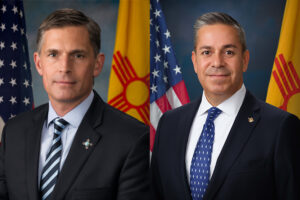
New Mexico U.S. Senators Heinrich and Lujan have key roles to play to ensure the Safety Board’s work continues unimpeded. https://www.heinrich.senate.gov/ and https://www.lujan.senate.gov/ Our voices of support are essential to ensure communities continue to receive the essential services of the Safety Board and its staff.
Right now members of the Safety Board’s staff are monitoring the venting of radioactive tritium from Area G at Los Alamos National Laboratory (LANL). Their expertise in the field of nuclear safety and their demonstrated competence and knowledge relevant to their independent investigative and oversight functions are an essential part of the process. They will be part of the follow-up once the venting of the four flanged tritium waste containers is completed. https://tewawomenunited.org/?s=tritium, https://www.ccwnewmexico.org/tritium, https://nuclearactive.org/
Not only does the Safety Board have staff at LANL, but also at Sandia National Laboratories in Albuquerque and at the Waste Isolation Pilot Plant, the burial site for plutonium contaminated nuclear weapons waste, near Carlsbad. https://ananuclear.org/facilities/
Russia suspected of helping North Korea build nuclear submarines, Seoul investigating
Analysts said such a technology transfer was plausible given Pyongyang’s support for Russia’s ongoing war in Ukraine
By Park Chan-kyong | September 18, 2025 scmp.com
South Korea is investigating reports that Russia has supplied North Korea with nuclear submarine reactor modules, a move analysts see as highly plausible and one that could mark a breakthrough in Pyongyang’s decades-long push for a nuclear powered navy…
Holy See tells nations at UN to end threat of nuclear weapons, even as deterrence
Amid a global arms race, ending the threat of nuclear war — and even the testing of nuclear weapons — is imperative, said the Holy See’s diplomat to the United Nations.
By Gina Christian, OSV News | September 8, 2025 catholicreview.org
Archbishop Gabriele G. Caccia, the Holy See’s U.N. permanent observer, shared his thoughts in a statement he delivered Sept. 4 at U.N. headquarters in New York, during the General Assembly High-level Plenary Meeting to Commemorate and Promote the International Day Against Nuclear Tests, observed that same day.
“The pursuit of a world free of nuclear weapons is not only a matter of strategic and vital necessity, but also a profound moral responsibility,” Archbishop Caccia in his remarks.
He pointed to the introduction of nuclear weapons — first detonated by the U.S. in 1945 over the Japanese cities of Hiroshima and Nagasaki, killing an estimated 110,000 to 210,000 people, during World War II — as unveiling to the world “an unprecedented destructive force.”
Historic peace vigil partially dismantled after Trump orders: ‘Take it down’
Law enforcement officials on Sunday removed parts of the White House Peace Vigil, which has sat just outside the White House for decades.
By Marissa J. Lang, The Washington Post | September 8, 2025 washingtonpost.com
But over the past week, it faced a new threat as Trump turned his attention to the vigil and federal officers picked apart the structure that shields protesters and their signs from the elements. The vigil is maintained by a rotating cast of volunteers who keep the protest going 24 hours a day, seven days a week.
On Friday, Brian Glenn, a correspondent for the conservative network Real America’s Voice, told the president during a gathering with reporters that there was “a blue tent” in front of the White House that was “an eyesore.” Trump initially said he was unaware of it, but he then quickly ordered its removal.
Photo by Sig. Chiocciola, Creative Commons: The White House Peace Vigil on March 30, 2025 staffed by volunteers, Philipos Melaku-Bello (left) and Joe Brown (right).
For 80 years, nuclear weapons have been the unused threat
Amid a global arms race, ending the threat of nuclear war — and even the testing of nuclear weapons — is imperative, said the Holy See’s diplomat to the United Nations.
By Matt Kelly, mkelly@virginia.edu, September 3, 2025 news.virginia.edu
In the 80 years since World War II, which ended with the use of two atomic bombs, the world has maintained a tenuous relationship with nuclear weapons.
Philip Potter, professor of public policy at the University of Virginia’s Frank Batten School of Leadership and Public Policy and director of the National Security Data and Policy Institute, said he worries about the current delicate nuclear balance.
“Eighty years of non-use is the product of both good diplomacy and a recognition of the potential consequences,” Potter said. “The fearsome power of nuclear weapons causes countries pause before they use them, but a great deal of work has also gone into nonproliferation and the management of crises to keep them away from the nuclear brink. In some ways the dynamics of the Cold War made managing the potential for nuclear confrontation easier.”
It’s a very different strategic scenario now, where there are nine nuclear powers and less capacity to manage them.
Nuclear News Archive – 2022
New investigative report documents fires, violations at company treating Hanford wastes
A new investigative report released exclusively to The Seattle Times by the nonprofit watchdog group Hanford Challenge documents the fires as well as other mishaps and compliance problems that the authors say “calls into question” the safety of sending Hanford’s wastes to Perma-Fix.
BY: Patrick Malone & Hal Bernton Seattle Times staff reporters | seattletimes.com
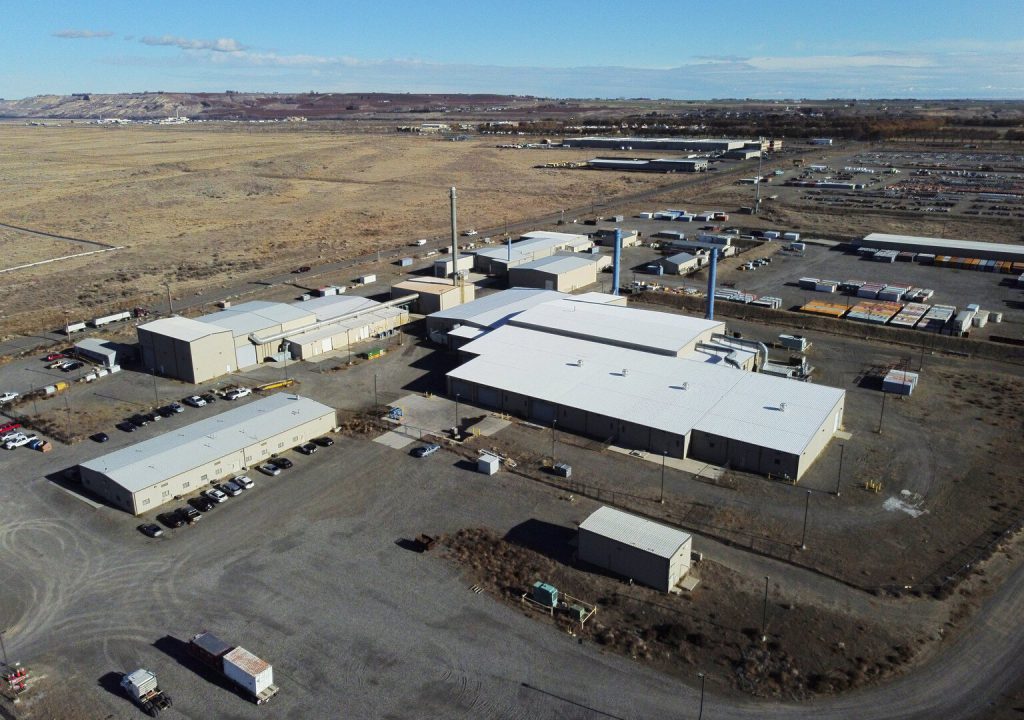
RICHLAND, Benton County — In May 2019, workers at the Perma-Fix Northwest plant pulled a hunk of radioactive waste from a powerful kiln heated to 2,100 degrees Fahrenheit — hot enough to ensconce the material in glass for eventual burial.
The workers let it cool — but not long enough — before setting it on a pallet. The residual heat caused the wood to burn. A crew from the plant sprayed chemicals on the fire before Richland firefighters arrived to finish that job.
A Washington Department of Ecology inspector in a report noted that a fire alarm system was not operating that month and that the incident “could have been catastrophic.”
Biden expected to re-examine SC factory
“South Carolina could be left holding the plutonium bag…It’s clear that the plutonium bomb plant at SRS is being driven by contractors and boosters who stand to profit by making South Carolina ground zero for an unacceptable new nuclear arms race that endangers national security and that places our state at environmental risk.” — Tom Clements, Savannah River Site Watch
BY: SAMMY FRETWELL| thestate.com
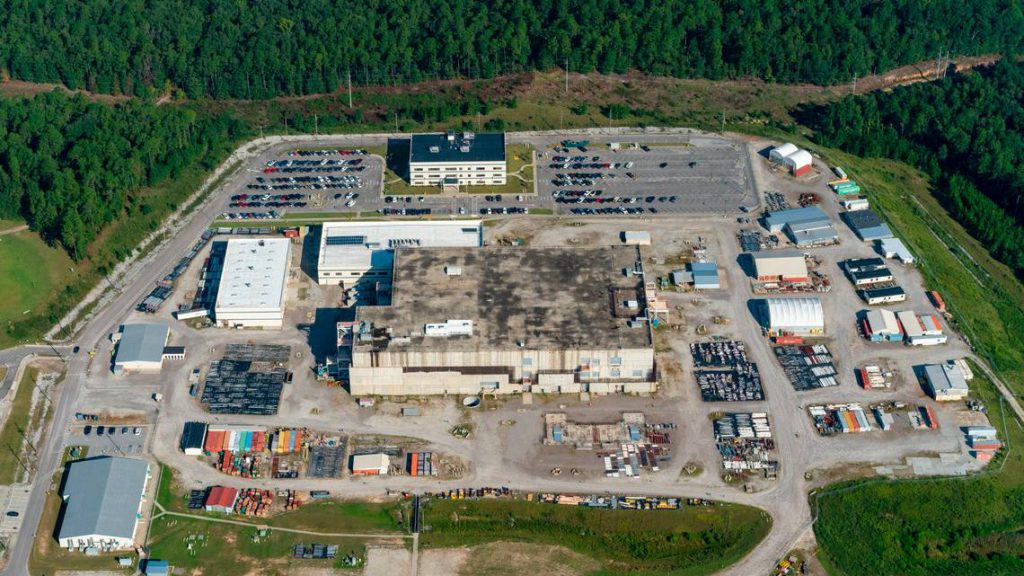
Earlier this month, efforts to build a jobs-rich nuclear weapons component factory in South Carolina reached a milestone that boosters hoped would keep construction plans on track over the next decade.
The National Nuclear Security Administration finalized a study that said the factory would not have a major effect on the environment at the Savannah River Site, the 310-square mile weapons complex near Aiken that would house the plant.
But the Nov. 5 announcement occurred at virtually the same time Joe Biden was in the process of winning the presidency — and as Biden prepares to take office in January, questions are surfacing about the factory’s future.
President Donald Trump’s plans for the pit factory almost certainly will be reviewed by Biden to see if it’s worth continuing the effort as envisioned, say national defense experts and others who track issues at SRS.
WIPP: New Mexico regulators halt utility shaft project, cite COVID-19, planning problems
“Given the current high incidence rate at the WIPP facility, including a reported death of an employee, the circumstances of which are currently unknown, it is clear that the Permittees are unable to successfully mitigate COVID-19 risk to protect human health while conducting the activities under the scope of this Request,” the letter said.
BY: Adrian Hedden, Carlsbad Current-Argus, N.M.| currentargus.com
Construction of a $100 million utility shaft at the Waste Isolation Pilot Plant could be halted after the New Mexico Environment Department denied a request to extend state authorization to build the shaft, citing missed deadlines in the planning of the project and the continued spread in COVID-19 cases at the facility.
The shaft, part of an almost $300 million rebuild of WIPP’s ventilation system, along with a series of fans and filter buildings known as the Safety Significant Confinement Ventilation System (SSCVS), was intended to improve airflow in the WIPP underground and allow for waste emplacement and mining to occur simultaneously along with future expansions of the nuclear waste repository.
In Georgia Senate runoffs, the focus — and the fire — is on Raphael Warnock
BY: Cleve R. Wootson Jr. | washingtonpost.com
MARIETTA, Ga. — There were dozens of Jon Ossoff signs at the rally outside the Cobb County Civic Center, but the touring campaign bus, the bulk of the applause and the final words belonged to the Rev. Raphael Warnock, who used them to boost two Democratic Senate campaigns.
“Georgia is positioned to do a marvelous thing,” Warnock told the crowd. “Send a young Jewish man, the son of immigrants, who sat at the feet of Congressman John Lewis, and a kid who grew up in the public-housing projects of Savannah, Georgia, the pastor of Martin Luther King Jr.’s Ebenezer Baptist Church, to the United States Senate at the same time.”
Two weeks into the extraordinary runoff races that will decide which party controls the U.S. Senate, Warnock and Ossoff have combined their efforts to try to win Georgia’s pair of Senate seats. Their names are stacked together on yard signs; they’ve called each other “brother” at joint campaign appearances. But it is Warnock who is animating the Democratic base — and the Republican opposition.
Flight tests to show B61-12 will work on Air Force’s newest fighter jet
Sandia Labs News Releases | sandia.gov
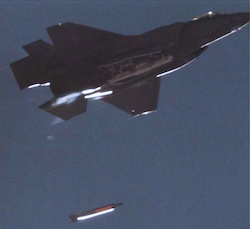
ALBUQUERQUE, N.M. — A mock B61-12’s strike in the dusty Nevada desert successfully completed the first in a series of flight tests with the U.S. Air Force’s newest fighter jet, demonstrating the bomb’s first release from an internal bomb bay at greater than the speed of sound.
The flight test of the B61-12 with the F-35A Lightning II this summer was the first ever at Sandia National Laboratories’ Tonopah Test Range featuring the fighter jet. It was also the first of a testing series that will conclude with full-weapon systems demonstrations designed to increase confidence the bomb will always work when needed and never under any other circumstances.
“We’re showing the B61-12’s larger compatibility and broader versatility for the country’s nuclear deterrent, and we’re doing it in the world of COVID-19,” said Steven Samuels, a manager with Sandia’s B61-12 Systems Team. “We’re not slowing down. We’re still moving forward with the B61-12 compatibility activities on different platforms.”
In partnership with the National Nuclear Security Administration, Los Alamos National Laboratory and the Air Force, Sandia completed a B61-12 full-weapon system demonstration with the F-15E Strike Eagle fighter jet in March, and another in July with the Air Force’s B-2 Spirit bomber.
The Treaty on the Prohibition of Nuclear Weapons: A brief explanation by Rick Wayman
Fracking Likely Triggered Earthquakes in California a Few Miles From the San Andreas Fault
Industry-induced earthquakes have been an increasing concern in the central and eastern United States for more than a decade.
BY: Thomas H. Goebel The Conversation | ecowatch.com
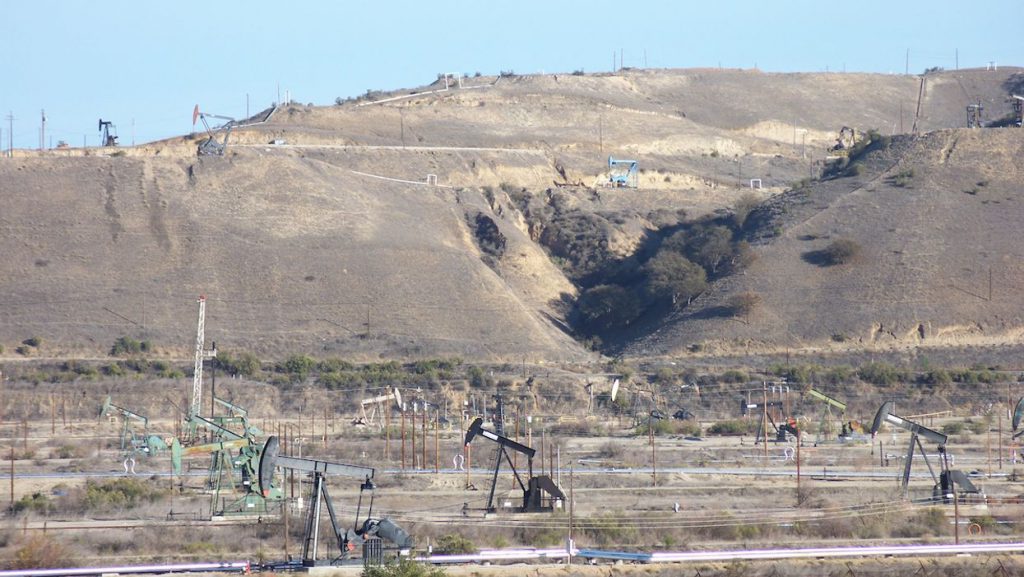
The way companies drill for oil and gas and dispose of wastewater can trigger earthquakes, at times in unexpected places.
In West Texas, earthquake rates are now 30 times higher than they were in 2013. Studies have also linked earthquakes to oil field operations in Oklahoma, Kansas, Colorado and Ohio.
California was thought to be an exception, a place where oil field operations and tectonic faults apparently coexisted without much problem. Now, new research shows that the state’s natural earthquake activity may be hiding industry-induced quakes.
As a seismologist, I have been investigating induced earthquakes in the U.S., Europe and Australia. Our latest study, released on Nov. 10, shows how California oil field operations are putting stress on tectonic faults in an area just a few miles from the San Andreas Fault.
‘Devastating’: Top Pentagon leadership gutted as fears rise over national security
“Trio of resignations follow defense secretary’s firing.”
BY: LARA SELIGMAN and DANIEL LIPPMAN | politico.com
The firing of Defense Secretary Mark Esper kicked off a rapid-fire series of high-level departures at the Pentagon on Tuesday, setting off alarms on Capitol Hill that the White House was installing loyalists to carry out President Donald Trump’s wishes during an already tense transition.
In quick succession, top officials overseeing policy, intelligence and the defense secretary’s staff all had resigned by the end of the day Tuesday, replaced by political operatives who are fiercely loyal to Trump and have trafficked in “deep state” conspiracy theories.
Fears continue to swirl over what these newly installed leaders will do as Trump fights the results of last week’s election, and after he has shown he is willing to use troops to solve political problems.
Tuesday’s exodus led one top Democrat to accuse the administration of gutting the Pentagon in a way that could be “devastating” for national security.
“It is hard to overstate just how dangerous high-level turnover at the Department of Defense is during a period of presidential transition,” said House Armed Services Chair Adam Smith. “If this is the beginning of a trend — the President either firing or forcing out national security professionals in order to replace them with people perceived as more loyal to him — then the next 70 days will be precarious at best and downright dangerous at worst.”
NNSA Administrator Fired While on Leave; Energy Secretary Tracked Her for Months
“After Brouillette and Gordon-Hagerty feuded last winter over the size of the NNSA’s budget — a contest that broke in Gordon-Hagerty’s favor when President Donald Trump requested roughly $20 billion as she recommended, instead of the $17.5 billion Brouillette preferred — Trump’s second secretary of energy tightened his grip over the NNSA in ways that his predecessor, Rick Perry had not.”
BY: EXCHANGEMONITOR
Secretary of Energy Dan Brouillette kept close tabs on then-National Nuclear Security Administration boss Lisa Gordon-Hagerty for months, sending chaperones to her meetings with Congress and monitoring her personal calendar before abruptly demanding her resignation last week, a source told Weapons Complex Morning Briefing.
It was a dramatic end to a year of strife between the two, who clashed over the size of the National Nuclear Security Administration’s (NNSA) budget and provided the Washington nuclear policy establishment with the latest experimental data about exactly how much autonomy the NNSA and its nuclear weapons programs have from the broader DOE’s nuclear-cleanup and energy programs.
Continue reading
Texas Gov. Greg Abbott objects to nuclear waste facility proposed in Permian Basin
“The proposed ISP facility imperils America’s energy security because it would be a prime target for attacks by terrorists, saboteurs, and other enemies,” read [Gov. Abbott’s] letter. “Spent nuclear fuel is currently scattered across the country at various reactor sites and storage installations.”
BY: Adrian Hedden | Carlsbad Current-Argus
Texas Gov. Greg Abbott continued to voice his disapproval against nuclear waste storage in the Permian Basin region in a letter last week to the federal Nuclear Regulatory Commission (NRC) opposing such a project in Andrews, Texas.
Interim Storage Partners (ISP), a joint venture between Waste Control Specialists and Orano USA, was formed in 2018 to request the NRC resume evaluation of an application submitted originally in 2016 to build a consolidated interim storage facility (CISF) that would hold spent nuclear fuel rods temporarily at the surface while a permanent repository is developed.
Abbott has been a frequent critic of the concept of a CISF and of siting such a facility in the Permian Basin, writing a letter to President Donald Trump in September to oppose CISFs in both Texas and New Mexico.
Possible Link between Star Athlete’s Cancer Connected to Radioactive Portsmouth Gaseous Diffusion Plant Next Door
Was DOE uranium enrichment plant responsible for star athlete’s cancer death?
BY: Cincinnati Investigative Journalist Duane Pohlman, WKRC | local12.com

PIKETON, Ohio (WKRC) – For the first time, Larry Farmer, the father of a local, All-American baseball pitcher, sat down for an exclusive interview with Local 12’s Chief Investigative Reporter Duane Pohlman to talk about the life and death of his famous son, Zach Farmer, who passed away from leukemia five years ago, blaming his death on radioactive elements he believes drifted to his former family home from the now-closed Portsmouth Gaseous Diffusion Plant.
A LEGEND THAT LIVED TO BE ON THE MOUND
Larry says Zach — the legendary southpaw from Piketon — was a natural from the beginning.
“No one could hit off him,” Larry said with a grin, adding that his son would routinely have 15 to 19 strikeouts a game, often leading the Piketon Red Streaks to victory.
“He lived to be on the mound,” his dad said, looking away and pausing to recall his son’s brilliant playing days.
At Piketon High School, Zach achieved more than nearly every other baseball player in Ohio history, including 599 strikeouts (No. 2 in Ohio High School Athletic Association history) and an overall record of 38-7, (No. 3 on the OHSAA list). He was even incredible at the plate with a head-spinning .505 batting average.
Michèle Flournoy could become the first woman to run the Pentagon. Here’s what would change.
“Nuclear modernization plans may change. Flournoy’s desire for a strong deterrent for China includes a nuclear deterrent. But given the costs of the ongoing nuclear modernization strategy, Flournoy wants to consider all options.“
BY: Aaron Mehta | defensenews.com
WASHINGTON — On June 20, 2016, then-Vice President Joe Biden delivered keynote remarks at an event hosted by the Center for a New American Security, the think tank founded and, at that point, led by Michèle Flournoy.
Flournoy introduced Biden, praising him as a national security thinker and noting the ties between his staff at the White House and CNAS. Biden, in turn, acknowledged the little-kept secret of the defense world: that Flournoy was in line to become the first woman to serve as defense secretary under President Hillary Clinton.
“Well, madam secretary,” Biden said with a laugh as the crowd applauded. “I’m writing a recommendation for her, you know.”
The Clinton administration never materialized, following the election of President Donald Trump. But four years later, president-elect Biden is widely expected to fulfill his promise and tap Flournoy to lead the U.S. military.
Safety Board Notes “Hard Shutdown” of the Key Cesium-Removal Step during Salt Waste Processing Facility (SWPF) Startup; For Second Time, DOE Failed to Publicly Reveal Operational Problems with SWPF, Shaking Trust in DOE’s Reporting about Status of Key High-Level Waste Management Facility
 “Given the importance of SWPF and this initial phase of its operation, updates must be frequent and honest by DOE, not delayed and incomplete,” – Tom Clements, director of SRS Watch
“Given the importance of SWPF and this initial phase of its operation, updates must be frequent and honest by DOE, not delayed and incomplete,” – Tom Clements, director of SRS Watch
Columbia, South Carolina – An independent safety board that monitors activities of the U.S. Department of Energy reports a “hard shutdown” during the initial startup of cesium removal from high-level nuclear waste at the Salt Waste Processing Facility (SWPF) at DOE’s Savannah River Site (SRS).
This is the second time that DOE has failed to mention a significant startup problem at SWPF, potentially undermining trust in its reporting to the public on the initial operations of this key facility to process liquid high-level nuclear waste, according to the public interest organization Savannah River Site Watch (SRS Watch). SWPF began “hot commissioning” involving radioactive liquid on October 5, 2020.
Experts: Nuclear waste storage a concern in New Mexico, Southwest
Several nuclear waste experts are urging members of Congress and the public to oppose any proposals to transport highly radioactive nuclear waste from power plants to temporary or long-term storage sites.
BY: Michael Gerstein mgerstein@sfnewmexican.com | santafenewmexican.com
Researchers with multiple groups dedicated to analyzing the potential consequences of nuclear waste storage said Friday they have major concerns with plans to transport spent fuel to other parts of the country — even for permanent storage at a place such as Yucca Mountain in Nevada.
Work on the Yucca Mountain Nuclear Waste Repository has been stalled for nearly a decade.
Waste is gathered at about 80 sites across the nation as the federal government continues looking for a permanent solution for highly radioactive spent nuclear fuel, spurring environmental and health worries.
The issue is of critical concern for New Mexico because Florida-based Holtec International has proposed creating a temporary storage facility about halfway between Carlsbad and Hobbs, where nuclear waste would be stored until the federal government forms a permanent facility.
Washington State Picks New Hanford Cleanup Watchdog
BY: TRI-CITY HERALD STAFF | tri-cityherald.com
Washington state has picked an environmental manager from its Yakima Department of Ecology office to oversee state regulations at the Hanford nuclear reservation.
David Bowen will replace Alex Smith as Ecology’s Nuclear Waste Program manager based in Richland starting Dec. 16. Smith took another state job at the end of October.
“I know Hanford is challenging and complex,” Bowen said, “But I’m excited for the opportunities it presents.”
LANL Tritium Venting, Middle DP Road And Consent Order Dominate NMED Community Engagement Meeting
More than 100 people tuned in to a virtual community engagement meeting hosted by the New Mexico Environment Department (NMED) Thursday evening where the proposed venting of four flanged tritium waste containers at Los Alamos National Laboratory, contain at Middle DP Road and the 2016 Consent Order were the main topics addressed.
BY: MAIRE O’NEILL | losalamosreporter.com
Stephanie Stringer, NMED Resource Protection Division Director, discussed a temporary authorization request from LANL for the venting of four flanged tritium waste containers currently stored at LANL. She said the containers were packaged at LANL’s Weapon Engineering Tritium Facility in 1996 and 1997 and were moved to Technical Area 54 in 2007.
Stringer said radiolysis of tritiated water in the containers over time has potentially resulted in hazardous concentrations of flammable hydrogen and oxygen mixture in the headspace of the FTWCs. She said the containers where they’re stored right now do not meet the Department of Transportation requirements and cannot be moved without releasing that pressure or treating the waste containers, so they need to be vented prior to transport, treatment and final disposal.
USAF Plans To Expand Nuclear Bomber Bases
“It is difficult to imagine a military justification for such an increase in the number of nuclear bombers – even without New START.”
BY: HANS KRISTENSEN | fas.org
The US Air Force is working to expand the number of strategic bomber bases that can store nuclear weapons from two today to five by the 2030s.
The plan will also significantly expand the number of bomber bases that store nuclear cruise missiles from one base today to all five bombers bases by the 2030s.
The expansion is the result of a decision to replace the non-nuclear B-1B bombers at Ellsworth AFB and Dyess AFB with the nuclear B-21 over the next decade-and-a-half and to reinstate nuclear weapons storage capability at Barksdale AFB as well.
The expansion is not expected to increase the total number of nuclear weapons assigned to the bomber force, but to broaden the infrastructure to “accommodate mission growth,” Air Force Global Strike Command Commander General Timothy Ray told Congress last year.
New Mexico’s oil fields have a sinkhole problem
The hunt for industrial brine has opened massive and unexpected sinkholes, which is taking delicate work, and more than $54 million, to fill.
“Carlsbad sits on the edge of the Permian Basin, an underground geological formation that stretches from southeastern New Mexico to West Texas and accounted for more than 35% of the U.S.’s domestic oil production in 2019. The surrounding desert is lined with rows of pumpjacks and the occasional white tower of a drilling rig.”
By: Elizabeth Miller | hcn.org
On a July morning in 2008, the ground below southeastern New Mexico began to shift and crack, shooting a huge plume of dust into the air. Within minutes, a massive sinkhole emerged, which eventually grew to roughly 120 feet deep and 400 feet in diameter.
“At the time, it was an unfortunate situation, but most people considered it to be a one-off,” says Jim Griswold, a special project manager with New Mexico’s Energy, Minerals, and Natural Resources Department. But a few months later, in November, dust once again streamed toward the sky as another similarly sized sinkhole opened, cracking a nearby roadway.
Both holes — and later, a third in Texas — emerged at the site of brine wells, industrial wells through which freshwater is pumped into a subterranean layer of salt. The freshwater mixes with the salt, creating brine, which is brought to the surface for industrial purposes; in this case, oil drilling. After the second sinkhole emerged, Griswold’s department head gave him a new task: Characterize the stability of the state’s 30 other brine wells and report back on where the next crisis might arise.
Carlsbad Company Sues WIPP for $32 Million After Air System Subcontract Terminated
“The Program specifically states that ‘construction should not be allowed to proceed until the design is sufficiently mature to minimize change orders,’” the lawsuit read. “No one in NWP’s upper management in Carlsbad had ever borne responsibility for seeing a construction project of this magnitude to completion.”
By: Adrian Hedden | Carlsbad Current-Argus
A $32 million lawsuit brought by a subcontractor at the Waste Isolation Pilot Plant alleged the company that runs the facility breached its contract to rebuild the nuclear waste repository’s air system.
Critical Applications Alliance (CAA), a Carlsbad-based joint venture between Texas-based Christensen Building Group and Kilgore Industries was hired by Nuclear Waste Partnership (NWP) in 2018 to construct the ventilation system at WIPP for $135 million, but its contract was terminated on August 31, about two years into the project.
Known as the Safety Significant Confinement Ventilation System (SSCVS), the system was intended to increase airflow in WIPP’s underground waste disposal area to allow for waste emplacement and mining operations to occur simultaneously.
Available air at WIPP was reduced in 2014 due to an accidental radiological release that led to contamination in parts of the underground.
U.S. Nuclear Bomb Overseer Quits After Clash With Energy Chief
“Her resignation came after a budget dispute between the NNSA and Brouillette and other officials spilled into the open earlier this year.”
BY: Ari Natter and Jennifer Jacobs | bloomberg.com
The U.S. official overseeing the nation’s nuclear weapons stockpile resigned Friday after clashing with Energy Secretary Dan Brouillette.
Lisa E. Gordon-Hagerty, administrator of the National Nuclear Security Administration and undersecretary of Energy for nuclear security, resigned after being told by Brouillette’s office that President Donald Trump had lost faith in her ability to do her job, according to two people familiar with the matter.
Some administration officials were disappointed that she’d been pushed out, saying that she was widely viewed by those in her field as capable, the people said.
Donald Trump fires defense secretary Mark Esper
In a pair of tweets Monday afternoon, President Donald Trump said he terminated his Secretary of Defense Mark Esper.
Esper’s tenure as top Pentagon official followed the resignations of Trump’s first Secretary of Defense James Mattis and then-acting Secretary of Defense Patrick Shanahan.
By: Amanda Macias | cnbc.com
WASHINGTON — In a pair of tweets Monday afternoon, President Donald Trump said he terminated his Secretary of Defense Mark Esper.
“I am pleased to announce that Christopher C. Miller, the highly respected Director of the National Counterterrorism Center (unanimously confirmed by the Senate), will be Acting Secretary of Defense, effective immediately,” Trump wrote.
‘Our industry knows Joe Biden really well’: Defense contractors unconcerned as Biden clinches victory
“I think the industry will have, when it comes to national security, a very positive view” of a Biden presidency, Punaro said.
By: Aaron Gregg | washingtonpost.com
The defense industry is taking a largely positive view of its prospects under an administration led by Joe Biden, who clinched the presidency on Saturday.
Although defense manufacturers have benefited from increased spending, tax cuts and deregulation under President Trump, their executives have told investors that they expect the former vice president and longtime senator will largely maintain the status quo with respect to defense spending.
THE CARCINOGENIC, MUTAGENIC, TERATOGENIC AND TRANSMUTATIONAL EFFECTS OF TRITIUM
“The dangers of tritium come from inhalation, ingestion, and absorption… when the radionuclide unites with carbon in the human body, plants, or animals, it becomes organically bound (OBT) and can remain in the human body for 450 to 650 days. One study found traces of tritium in the body 10 years after exposure.”
New Mexico, Texas Lawmakers Oppose Interim Storage Partners Spent Nuclear Fuel Storage Plans
New Mexico Environment Department comments to NRC, opposing ISP CISF 0.37 miles from NM state line, in TX
See the comments posted online, here. November 3, 2020
Texas Governor Abbott expresses strong opposition to ISP/WCS CISF, in written DEIS comments to NRC
Accompanying press release:
|
|
|
|
|
Nuclear Watch New Mexico’s Critique of Some NNSA Answers to Questions on LANL’s Planned Tritium Releases
November 4, 2020
The Los Alamos National Laboratory (LANL) proposes to vent up to 114,000 curies of radioactive tritium gas to the open atmosphere while claiming that it poses no public health and safety risks. Public outcry and congressional pressure prompted the National Nuclear Security Administration (NNSA) to host a public information virtual meeting on this issue on October 20. Due to the overwhelming turnout of some 150 interested citizens and ear-splitting technical difficulties NNSA is holding another public virtual meeting at 5:00 pm Thursday November 5.
Interested citizens can join the discussion at https://www.lanl.gov/environment/flanged-tritiumwaste-containers.shtml
If you wish to speak or ask questions you should pre-register at the same site.
Nuclear Watch New Mexico Comments on U.S. Nuclear Regulatory Commission’s Interim Storage Partners/Waste Control Specialists Consolidated Interim Storage Facility Draft Environmental Impact Statement
RE: Docket ID NRC-2016-0231/Report Number NUREG-2239, the U.S. Nuclear Regulatory Commission’s Interim Storage Partners/Waste Control Specialists Consolidated Interim Storage Facility Draft Environmental Impact Statement
Dear U.S. Nuclear Regulatory Commission (NRC) Commissioners and Staff,
We respectfully submit these comments in response to the Draft Environmental Impact Statement (Docket ID NRC-2016-0231) regarding Interim Storage Partner’s (ISP) application for a license to build and operate a “Consolidated Interim Storage Facility for Spent Nuclear Fuel in Andrews County, Texas” (NUREG-2239), which plans to bring at least 40,000 metric tons of spent fuel, high-level radioactive waste, from nuclear reactors around the country to west Texas. Please know that we do not consent to our region becoming a national radioactive high-level waste dumping ground or to transporting up to thousands of canisters of radioactive waste through thousands of communities. We should not have to risk the contamination of our land, aquifers, air, plants, wildlife, and livestock. We do not consent to endangering present and future generations.
Read/Download full comments HERE
Release Of Radioactive Tritium A Bad Idea
 BY DR. VIRGINIA NECOCHEA & CHARLES DE SAILLAN
BY DR. VIRGINIA NECOCHEA & CHARLES DE SAILLAN
Tritium is a radioactive isotope of hydrogen. It emits beta radiation, which can be very dangerous if inhaled. Like other forms of ionizing radiation, tritium can cause cancer, genetic mutations and birth defects, and assorted other adverse health effects.
So it is not surprising that many people were dismayed when they learned that the U.S. Department of Energy (DOE) and its contractor at Los Alamos National Laboratory plan to release 114,000 curies of tritium gas into the atmosphere at Technical Area 54 and, possibly, at Technical Area 16. DOE has been storing this waste tritium in four steel canisters at TA-54 at the Laboratory for more than a decade. Over time, pressure has built up in the canisters, which DOE plans to relieve by venting the tritium gas into the atmosphere.
DOE Issues Controversial Decision to Pursue a Plutonium Bomb Plant (PBP) at Savannah River Site (SRS); Inadequate Environmental Review and Lack of Justification for Production of 50 or More “Pits” per Year to Modernize Entire Nuclear Weapons Stockpile Open to Legal Challenge
November 5, 2020
The U.S. Department of Energy (DOE) today issued a formal decision that it will pursue a massive Plutonium Bomb Plant (PBP) at the DOE’s Savannah River Site (SRS) in South Carolina, in order to produce plutonium “pits,” or cores, for nuclear warheads. The provocative decision, which adds fuel to concerns about a new nuclear arms race with Russia and China, drew immediate opposition from public interest groups near DOE sites in South Carolina, New Mexico and California.
The issuance by DOE’s National Nuclear Security Administration (NNSA) of the “Record of Decision” (ROD) on the Environmental Impact Statement (EIS) on pit production at SRS, issued in late September, officially affirms the “preferred alternative” that DOE intends to produce a minimum of 50 plutonium “pits” per year by 2030 at SRS. Also on November 5, NNSA issued an “Amended Record of Decision” (AROD) to its 2008 nation-wide Complex Transformation Programmatic Environmental Impact Statement that incorporated its SRS pit-production decision.
Subcontractor sues WIPP for $32 million in canceled work
Critical Applications’ ventilation project was tied to a radiation leak in 2014 that often is recalled as the “kitty litter” incident.
BY: SCOTT WYLAND | santafenewmexican.com
A subcontractor is suing the company that operates the Waste Isolation Pilot Plant in Southern New Mexico, claiming $32 million for what it says was gross mismanagement of a major construction project at the nuclear waste disposal site.
In a federal lawsuit, Texas-based Critical Applications Alliance LLC, which was hired to build a ventilation system at WIPP, says Nuclear Waste Partnership was such a disorganized project manager that it caused repeated delays and cost overruns, resulting in multiple breaches of contract.
The subcontractor also complains WIPP managers abruptly canceled its $135 million contract in August with no explanation and without paying millions owed.
Political strategist & lobbyist each plead guilty in federal public corruption racketeering conspiracy involving more than $60 million
United States Attorney David M. DeVillers
Southern District of Ohio
FOR IMMEDIATE RELEASE THURSDAY, OCT. 29, 2020
CINCINNATI – A longtime campaign and political strategist for Ohio House Representative Larry Householder and a lobbyist hired by an energy company to funnel money to Householder’s enterprise each pleaded guilty in federal court today.
Jeffrey Longstreth, 44, and Juan Cespedes, 41, of Columbus, each pleaded guilty to participating in a racketeering conspiracy involving more than $60 million paid to a 501(c)(4) entity to pass and uphold a billion-dollar nuclear plant bailout.
U.S. to Launch Minuteman III Missile Test Just Five Days After 50th Country Ratified Treaty on the Prohibition of Nuclear Weapons
“While most of the world’s countries are evolving to a view that nuclear weapons are unacceptable under all circumstances, the U.S. is testing a nuclear missile built to fight the Cold War; one which is designed to cause the indiscriminate slaughter of hundreds of thousands of people.”
By: Sandy Jones | wagingpeace.org
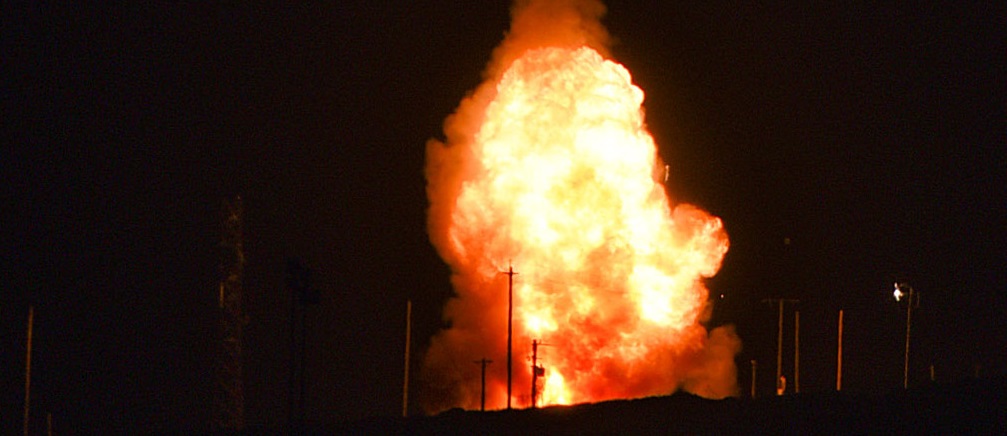
SANTA BARBARA, CA– Early tomorrow morning, between 12:01 a.m. and 6:01 a.m., the United States will launch an unarmed Minuteman III intercontinental ballistic missile from Vandenberg Air Force Base. While the Air Force maintains that missile tests are planned many months in advance, the timing of this test is questionable, at best.
This test will take place just five days after Honduras became the 50th country to ratify the Treaty on the Prohibition of Nuclear Weapons (TPNW). With the 50th ratification, the treaty will enter into force on January 22, 2021. The treaty prohibits the possession, testing, use, or threat of use of nuclear weapons.
Column: Yes, Santa Susana is a ‘landmark’ — as a historic environmental disaster
The Santa Susana Field Laboratory site is “one of the most toxic sites in the United States by any kind of definition,” Jared Blumenfeld, head of the California Environmental Protection Agency, told me. “It demands a full cleanup.”
BY: MICHAEL HILTZIK | latimes.com

One thing is certainly true about NASA’s curious effort to place 2,850 acres above the Simi Valley on the National Register of Historic Places: The parcel is certainly a landmark.
Among the points in dispute is what makes it so.
To several local Native American tribes, including the Santa Ynez Band of Chumash Indians, the Ventura County site’s cave drawings and rock shelters bespeak a cultural heritage dating back centuries.
The time has come for us to make sure that we hold the polluters accountable for their legacy….We will make sure the site gets cleaned up and we will exercise our legal authority in pursuit of that. – CALEPA SECRETARY JARED BLUMENFELD
To environmentalists and the site’s neighbors, it’s historic for the extent of its contamination by chemical and nuclear research performed there during the Cold War.
‘It just goes into a black hole’ The Trump administration is burying dozens of studies detailing the promise of renewable energy, impeding a transition away from fossil fuels
“The disposal of contaminated water at the Fukushima Daiichi plant has been a longstanding problem for Japan as it proceeds with an decades-long decommissioning project. Nearly 1.2 million tonnes of contaminated water are currently stored in huge tanks at the facility.”
BY: Peter Fairley | grist.org This story was produced in collaboration with InvestigateWest, a nonprofit newsroom in Seattle with a focus on the environment, public health, and government accountability
It was a scorching August day at the Hoover Dam as three Trump administration officials gathered for a little celebration honoring pollution-free hydroelectricity. Inside the dam’s Spillway House Visitor Center, air conditioning thankfully kept people comfortable as the president’s appointees heaped praise on hydropower. A U.S. Department of Interior news release about the event calls hydroelectric dams such as Hoover —where the Colorado River slips between Arizona and Nevada — a “unique resource critical to America’s future, which supports the integration of other renewables like wind and solar onto the grid.”
But what went unsaid at the grip-and-grin was that one of those high-ranking officials, Dan Simmons of the U.S. Department of Energy doesn’t appear to fully support renewables. In fact, he has presided over his agency’s systematic squelching of dozens of government studies detailing its promise.
One pivotal research project, for example, quantifies hydropower’s unique potential to enhance solar and wind energy, storing up power in the form of water held back behind dams for moments when the wind isn’t blowing and the sun isn’t shining. By the time of the Hoover Dam ceremony, Simmons’ office at the Energy Department had been sitting on that particular study for more than a year.
A Turning Point in the Struggle Against the Bomb: the Nuclear Ban Treaty Ready to Go Into Effect
“The TPNW arrives at a time when the risks of nuclear war are rising and as the world’s major nuclear armed states are building up their nuclear weapons capabilities. It enters into force at the same time that other key agreements limiting nuclear weapons are being discarded or threatened, and as the major nuclear-armed states are failing to meet their NPT nuclear-disarmament obligations…The entry into force of the TPNW is a much-needed wake-up call that has the potential to stimulate further action on disarmament and take us closer to a world without nuclear weapons.”
BY: Daryl G. Kimball | justsecurity.org
The Treaty on the Prohibition of Nuclear Weapons (TPNW) marks a turning point in the long history of the effort to reduce nuclear risks and to eventually eliminate the 13,000 nuclear weapons that remain today, 90 percent of which are held by the United States and Russia. On Oct. 24, Honduras became the 50th country to ratify the treaty, triggering its entry into force 90 days later, on Jan. 22, 2021.
That date will mark the first time since the invention of the atomic bomb that nuclear weapons development, production, possession, use, threat of use, and stationing of another country’s nuclear weapons on a state party’s national territory are all expressly prohibited in a global treaty. The TPNW’s entry into force will arrive almost exactly 75 years after the United Nations General Assembly’s (UNGA’s) adoption, on Jan. 24, 1946, of its very first resolution, Resolution 1 (I), which was to establish a commission to ensure “the elimination from national armaments of atomic weapons and all other major weapons adaptable to mass destruction.”
Japan rejects nuclear ban treaty; survivors to keep pushing
“Atomic bomb survivors, who have long worked to achieve the treaty, renewed their call for Japan to become a signatory. Terumi Tanaka, a survivor of the Aug. 9, 1945, Nagasaki bombing who has long campaigned for a nuclear weapons ban, said he has not given up hope.”
BY: Mari Yamaguchi The Associated Press | apnews.com
TOKYO – Japan said Monday it will not sign a U.N. treaty that bans nuclear weapons and does not welcome its entry into force next year, rejecting the wishes of atomic bomb survivors in Japan who are urging the government to join and work for a nuclear-free world.
The United Nations confirmed Saturday that 50 countries have ratified the Treaty on the Prohibition of Nuclear Weapons, paving the way for its entry into force in 90 days.
The announcement was hailed by anti-nuclear activists, but the treaty has been strongly opposed by the United States and other major nuclear powers.
Deregulation of Rad Waste Disposal Plows Ahead
Decommissioned Reactors OK-ed for Landfills in Big Gift to Nuclear Industry
By: Jeff Ruch & Kirsten Stade | peer.org
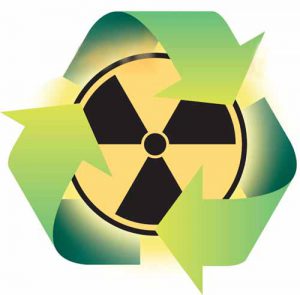 Washington, DC —The Nuclear Regulatory Commission is finalizing a year-long drive to functionally deregulate disposal of massive amounts of radioactive waste. NRC’s plan would allow commercial nuclear reactors to dump virtually all their radioactive waste, except spent fuel, in local garbage landfills, which are designed for household trash not rad-waste, according to comments filed today by Public Employees for Environmental Responsibility (PEER).
Washington, DC —The Nuclear Regulatory Commission is finalizing a year-long drive to functionally deregulate disposal of massive amounts of radioactive waste. NRC’s plan would allow commercial nuclear reactors to dump virtually all their radioactive waste, except spent fuel, in local garbage landfills, which are designed for household trash not rad-waste, according to comments filed today by Public Employees for Environmental Responsibility (PEER).
Today marks the end of public comments for an NRC “interpretative rulemaking” that would, in effect, abrogate longstanding requirements that virtually all such waste must be disposed of in licensed radioactive waste sites meeting detailed safety standards and subject to NRC inspection and enforcement. Instead, NRC would grant generic exemptions for unlicensed waste handlers.
NRC declares its “intent” that these newly exempt disposal sites would be limited to “very low-level radioactive wastes” – a term undefined by statute – which NRC considers to be “below 25 millirem per year.” Yet, NRC’s definition would allow public exposure to the equivalent to more than 900 chest X-rays over a lifetime, create a cancer risk twenty times higher than the Environmental Protection Agency’s acceptable risk range, thousands of times the risk goal for Superfund sites, or enough radiation to cause every 500th person exposed to get cancer.
Nuclear News Archives – 2021
Nothing Found
It seems we can’t find what you’re looking for. Perhaps searching can help.

